Luna Aziz
Founder & CEO, Legendairy Milk
Page 30


Luna Aziz
Founder & CEO, Legendairy Milk
Page 30

A LOVE LETTER TO AUSTIN AND THE WOMEN SHAPING ITS NEIGHBORHOODS, BLOCK BY BLOCK

Contemporary Italian design and cutting-edge power motion unite in the new Alessia seating series, available locally at Copenhagen. Ease into custom comfort at the touch of a button with Alessia’s dual power motion recline, enhanced by smooth, luxurious clay brown leather and wraparound warm walnut legs.
Alessia Seating available from stock in top-grain clay brown leather on walnut legs with power back and leg rest adjustment. Sofa $5,595 Loveseat $4,895 Chair $2,895
Special order options available for a custom cover or confguration.

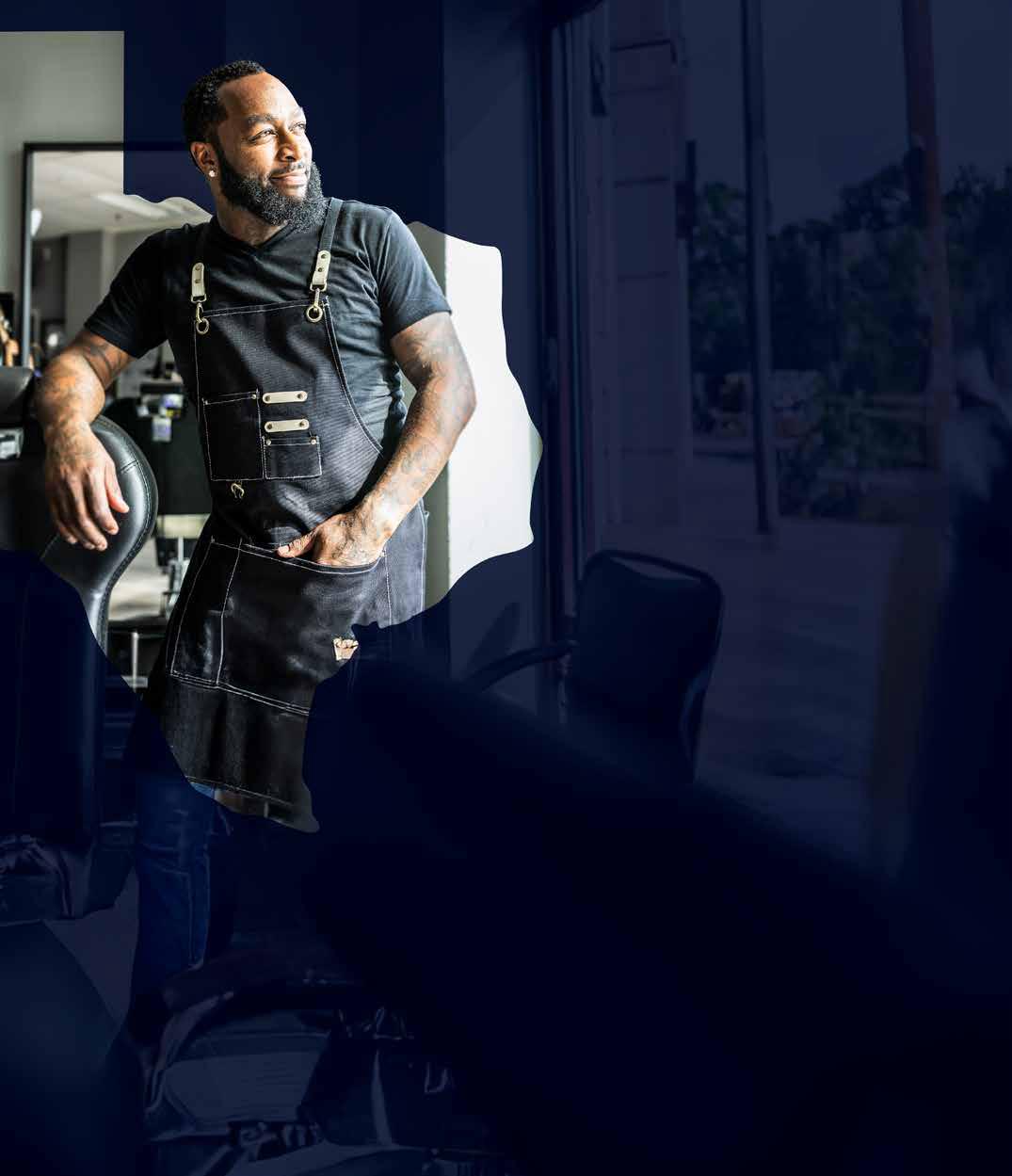
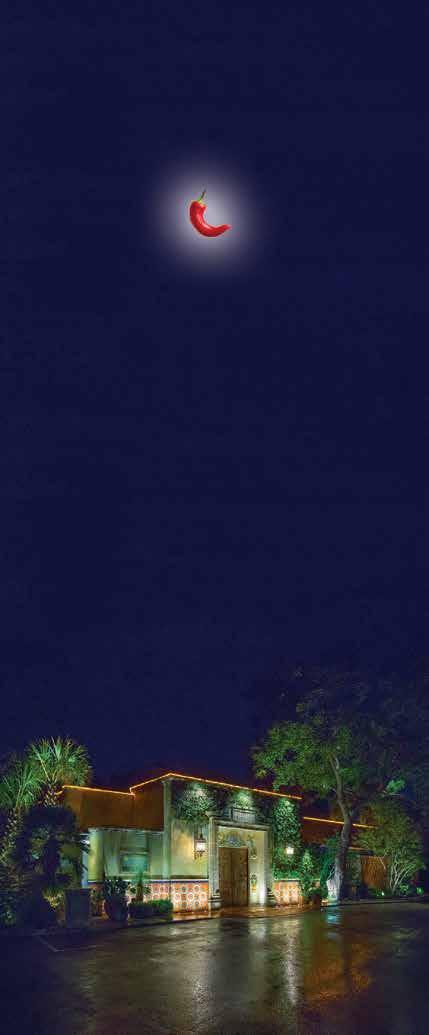




Lina Supnet-Zapata, MBA, CMC, TxCG, CEO

Mir Care Consultants, Inc. proudly serves communities across Texas with personalized care, designed to ease the challenges families face as their loved ones age. Guided by genuine commitment, deep experience and local insight. We stand beside you to offer understanding, reassurance, & peace of mind throughout your journey.

Care Management & Advocacy –
Guidance through medical decisions, care transitions, & special needs planning, ensuring the right resources & support at every stage
Guardianship & Power of Attorney –
Protecting vulnerable individuals with personal & financial oversight, benefit management, & POA guidance to safeguard well-being & rights
Specialized Programs –
Social engagement opportunities, our PALS after-loss support, & corporate elder-care initiatives that help families & employees balance care & life
LET US HELP YOU PLAN FOR THE
Austin - Corpus Christi - Houston - BryanCollege Station & Surrounding Areas



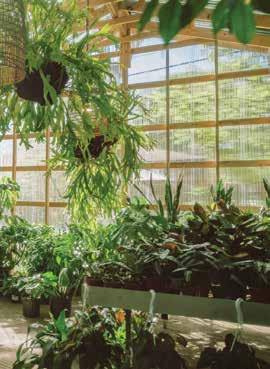
NORTH AUSTIN
13 Navigating Transformation
14 Austin Goes O Leash
19 A Place of Rest and Resistance
22 AW Recommends
26 3 Questions with Alex Reichek
39 The Market Calibrates
40 AW Recommends
44 3 Questions with Lauren Petrowski
56 Opportunities Open Up
57 The Sisters Who Built a Taco Legacy
61 AW Recommends
63 3 Questions with Audrey Scheck
76 Raising the Bar
77 When Waste Isn’t Waste
80 AW Recommends
84 3 Questions with Antoinette Harris
ROLL CALL
34 Jackie Ibarra &
Blair Waltman-Alexin
35 Michelle Simmons
52 Cynthia Aguillón Bernard
53 Kim Pollok
72 Lisa Magick
73 Jordan Flowers
89 Jenny Remington
90 Doménica Niño
91 Kelsey Harrison


Interim CEO
Sarah Puil
VP of Business Operations
Betsy Blanks
Interim Editor
Jocelyn Lovelle
Marketing & Production
Manager
Isabella Petrecca
Sales Manager
Bay Stewart
Editorial and Sales Operations
Assistant
Bobbie Blanks
Co-Owner/Co-Founder
Melinda Garvey
Co-Founders
Kip Garvey
Samantha Stevens
Co-Owners
Lana Macrum, Lynelle McKay, Gretel Perera, Ana Ruelas, Neha Sampat
Guest Editor
Ana Ruelas
Art Contributors
Iris Castro
Oh My Soul Photography
Susan Del Broccolo
Pure Fotografca
Felicia Reed
Black Pearl Books
Kristen Votto, All Ears Socialn
Mack Eveland
Zion Bliss
Jenna Kahn
Lindsey Brown
JD Swigger
Douglas Friedman
Leah Faye
Jewels Montano
Isaac Castillo
Joi Conti Photography
Jaycee Grover
Lyndon Core
Brian Fitzsimmons
Austin Woman is a free quartly publication of AW Media Inc. and is available at locations throughout Austin and in Lakeway, Cedar Park, Round Rock and Pfugerville. All rights reserved.
To offer feedback, email feedback@ awmediainc.com.
For submission information, visit atxwoman.com/jobs.
No part of the magazine may be reprinted or duplicated without permission.
Visit us online at atxwoman.com. Email us at info@awmediainc.com. 512 328.2421 | 7401 West Slaughter Lane, Austin, TX 78739
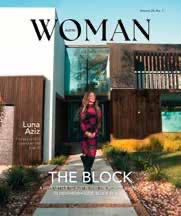
COVER:
Photographs by Annie Ray Photography Hair and Makeup by Megan Rumpf, Casita Salon
Shot on location at 2502 Barhill Dr., Austin, TX 78704 - a listing of THE AGENCY
Best places to enjoy the cooler Austin Weather



Fall is my absolute favorite time to be outside! I love that I can take my toddler on adventures every weekend rather than trying to fnd indoor activities to keep everyone entertained. We do a lot of hiking at Mary Moore Searight Metropolitan Park with our dogs, explore the Lady Bird Johnson Wildfower Center, and my favorite - grab a great beer while letting my toddler run wild on the playground at Meanwhile Brewing!
One of my very favorite parts of fall in Austin is when the summer crowds recede, and there’s enough rain for the creeks to still be running. A fall swim in Barton Creek, as the Sycamore leaves turn a golden brown and the sunlight gets thin and low, is one of the biggest joys of living here. I’m also a big fan of a long walk along Town Lake in the early evening to watch the kayakers and paddle boarders fnish their rides as the city lights come up across the lake. One of my favorite memories is watching the full moon rise just at that time, standing there thinking that no other city is quite like Austin.
Since moving to Austin, I’ve quickly learned fall is the best time to be outside. One of my go-to’s is The Yard at St. Elmo Arts District, a tucked-away warehouse development with everything from creative businesses and hightech manufacturing to distilleries and live music. With Austin-style murals brightening the industrial infrastructure, it's a great place to explore. If I want to dine al fresco, I’ll head to Arbor Food Park, specifcally for Cuantos Tacos. And for some much needed nature, the trails at Tejas Park in Georgetown are always perfect for casual hikes.

By Ana Ruelas – Founding Managing Partner, THE AGENCY AUSTIN

When I rst arrived in Austin 18 years ago, the skyline was humble, the pace was slower and the city still had the feel of a well-kept secret. Back then, you could park downtown without circling for 20 minutes, and the Frost Bank Tower stood tall and proud as the architectural landmark, a crystal owl keeping watch over a city still deciding what it would become.
Fi een years later, the skyline is BOLD, ambitious and still growing, just like the city itself. Beyond the high-rises and cranes, Austin’s visible transformation has rippled across every layer of its culture, economy and identity, but Austin’s story is also about what’s evolving under the surface.
The Rise of a New Skyline & a New Economy Austin’s skyline, once low pro le is, now a headline. The Independent, with its striking “Jenga” silhouette, joined The Austonian, Google Tower and the under-construction Waterline (soon to be the tallest building in Texas), creating a jagged, dynamic re ection of a city on the rise. This vertical momentum mirrors what’s happened on the ground: global companies have planted deep roots here, transforming Austin from a creative playground into an economic powerhouse. In the past decade alone, we’ve seen Apple invest $1B in its North Austin campus, Oracle relocate its headquarters here, Tesla open its Gigafactory in Del Valle and Google, Meta, and Amazon steadily expand their Austin footprints.
These business deals go beyond investment and expansion, they’ve rede ned how people live, where they work and what they can expect from their careers, all of which have profoundly impacted the local real estate market.
According to the Austin Chamber of Commerce, Austin's job market has grown more than 30% in 10 years, driven largely by tech and innovation industries. Because of that, we've become one of the top destinations for high-income talent and venture capital investment.
Real Estate, Reimagined Naturally, this boom brought pressure…along with opportunity to the housing market. As more talent arrived, demand soared, prices climbed and neighborhoods evolved. Places like Rollingwood and Westlake, once known for classic suburban calm, have undergone a dramatic shi . Teardowns turned into custom estates, new builds now feature luxury amenities, wellness spaces and designer nishes. Median home prices in these areas have skyrocketed, with many properties now comfortably exceeding $4M.
Meanwhile, East Austin, a long-time creative enclave, has become one of the city’s most exciting and fast-changing neighborhoods. Street murals coexist with sleek modern homes, warehouses now hold Michelin-starred restaurants and the balance between honoring the roots and welcoming the future continues to be a delicate one. As a local and managing partner in a real estate rm, I’ve watched the industry change, too. It’s no longer enough to know the market, you have to understand the movement. Clients expect local expertise and global perspective. The real estate playbook had to evolve to keep pace with Austin’s ambitions, and we became marketers, data analysts, design consultants and community storytellers, o en all in one conversation. Today’s top agents are deeply embedded in the fabric of the city—not just showing homes, but shaping neighborhoods. We've grown with the city, and our role now goes far beyond transactions.
From Food Truck Cool to Global Culinary Cred You can’t talk about Austin’s growth without mentioning the food. The spirit that once launched
Torchy’s out of a trailer and made Franklin Barbecue a national name is still alive,but now it’s layered with global culinary ambition. In the last few years alone, Austin has welcomed its rst Michelin-starred restaurant, opened experimental tasting menus in tucked-away corners of East Austin and created a culture where chefowned concepts thrive.
But the best part? You can still grab world-class tacos from a truck on South Congress. That’s the beauty of Austin, it layers the new over the familiar, building on the past to create the future.
For all the cranes and commerce, Austin’s soul still pulses with creativity. From the Red River music district to the East Side art walks, from ACL Fest to the Pecan Street Festival, this is a city that still values self-expression. While we’re still “weird” we’re also thoughtful, intentional and inclusive. The conversations have expanded, and so has the opportunity for those of us helping shape the city’s next chapter.
My Perspective
I have witnessed Austin grow, pivot and rise in ways I never could have imagined when I rst arrived. For all its transformation, what keeps Austin special is the people; those who believed in it early and those just discovering its promise. The skyline may have changed, but the heart of this city is still built on community, creativity and connection.
Austin’s story is still being written. It’s a city in motion; a place where you can trace the evolution of tech, taste and talent just by walking down South Lamar or looking out from a balcony in Tarrytown. And for those of us in real estate, it’s both a privilege and a responsibility to help people navigate this exciting, complex and ever-changing landscape.
Because in the end, it’s about belonging, and Austin still has room to grow, for dreamers, doers and everyone in between.
I am honored to call Austin home and eager to see where we go and grow from here.
Fashion Show
Attendee Photos by Joi Conti
The September heat held on through evening on the 18th, but inside Macy’s at The Domain, the warmth felt intentional. This was Austin Woman’s 2nd Annual Fashion Show in conjunction with the ACC Fashion Incubator, and from the moment you walked in, the vibe was clear: approachable, not stuffy.
Women wandered through the pop-up market, browsing local artisans and indie brands, and the preshow scene had that perfect hum of anticipation. The VIP section at Sixty Vines offered a space for networking and authentic connection. When the lights called everyone to their seats, attendees settled in between aisles of clothes from Macy’s own racks. It was an evening surrounded by fabric, texture and community, proof that Austin’s design scene has arrived, and it’s wearing exactly what it wants.


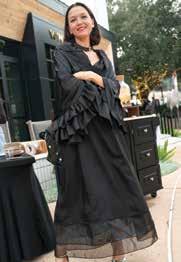

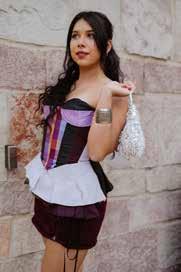
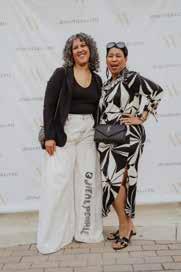



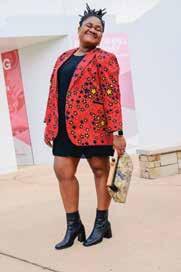


How Margo Pillischer is shaping the next chapter at Ross Scalise Beeler Pillischer Employment Lawyers.
This month, Margo Pillischer became managing partner of Ross Scalise Beeler Pillischer Employment Lawyers, the rm her father, Dan Ross, founded 30 years ago. The transition represents a rare dynamic in the legal world. While generational succession happens in many family law rms, father-daughter leadership transfers remain uncommon.
“Leadership isn’t something you hand over because of family ties. It’s something you step into because you’ve proven you can push a high-performing team even further. Margo’s been doing that long before the title changed- through her judgment, her work ethic and her understanding that this rm’s reputation is built on how we treat people,” said Ross.
For Pillischer, taking the helm means building on her father’s legacy of ghting for employees’ rights while evolving how the rm serves Austin’s diverse workforce. Her loyalty to the rm, combined with her understanding of every facet of operations and marketing, has been instrumental in its unprecedented growth.
“This rm was founded to protect workers who felt powerless— and I’m proud to carry that legacy forward. Today’s workforce faces new challenges, and as managing partner, I’m committed to evolving our approach while keeping advocacy, support and client trust at the heart of everything we do,” said Pillischer.
A er running construction businesses and restaurants, earning his law degree and working on the corporate side of cases, Dan Ross founded his rm in 1998 on the belief that every worker deserves fairness and respect, no matter how powerful their employer. What started as a small Austin practice has grown into a statewide leader in employment law.
“Many times, people are just getting bullied because they don’t know their rights,” Ross said. “A big company is suing them for reasons that aren’t always legitimate.”
Pillischer dedicates much of her practice to representing pregnant women facing discrimination and survivors of sexual harassment. Fluent in both English and Spanish, she ensures legal representation is accessible to diverse communities. The rm’s intake team focuses on empathy and clear communication from the rst phone call, setting the tone for how every case unfolds.
The rm represents individuals facing discrimination, harassment, retaliation and wrongful termination across Texas. Beyond litigation, the team provides practical legal guidance on severance packages,

non-compete agreements and executive compensation.
As a woman-led rm in Austin, Ross Scalise Beeler Pillischer measures success di erently. “True success is when a client walks away feeling like they took their power back,” Pillischer explained.
Clients describe feeling like they had a big sister or trusted family member ghting alongside them. “We don’t just ght for results, we do it in a way that restores con dence and dignity,” Pillischer said. “That’s what clients love most.”
For Pillischer and other women leaders, growth has meant rede ning what leadership looks like in law. That includes mentoring the next generation of attorneys, promoting exibility that supports work-life balance and proving that compassion and competitiveness work together.
Pillischer remains actively engaged in Austin’s legal community and shares her expertise on national platforms, but her focus stays on the work itself.
Rebecca Mills, Manager of Case Evaluations, captured what drives the team: “Every day, I get to help someone who feels unheard nally have a voice. Working here reminds me why compassion and justice can coexist and why that combination changes lives.”
When asked what song best represents the rm’s spirit, the answer was immediate: “Fight Song” by Rachel Platten. It’s about nding strength when the odds are against you, exactly what the rm helps employees do every day.
As Margo Pillischer prepares to lead Ross Scalise Beeler Pillischer into its next chapter this November, the rm’s purpose remains clear: helping ordinary people stand up to extraordinary power and making Texas workplaces fairer and more just. For anyone facing workplace injustice, the rm o ers what every worker deserves: a legal team unafraid to stand beside them. ◆

Realtor Katherine Wright on how tech, culture and transformation are reshaping the city's residential landscape.

North Austin is shedding its suburban skin. What was once primarily residential terrain has shi!ed into a dynamic, mixeduse environment where contemporary architecture, public art and lifestyle-focused developments are rede"ning the area's identity. The arrival of major tech employers has spurred o ce buildings, modern apartment complexes and updated retail corridors that cater to a younger, creative and increasingly global workforce.
According to Unlock MLS stats, the Austin metro area is seeing homes spend an average of 68 days on market as of August 2025. While North Austin neighborhoods like North Loop and Hyde Park are still seeing median prices in 2025 of $644,400 and Crestview is seeing slightly lower close prices of $585,000, the market is "nding its rhythm a!er years of meteoric growth as it works through an inventory correction,
with many families who rented their homes instead of selling now facing lease renewals. "There is way too much inventory in Austin right now and it needs to sort itself out. It's dif"cult to tell how much will be for sale because so many families rented their homes instead of selling and there will be a lot of rentals ending next spring," said Katherine Wright, Realtor and Wright Family Fund Executive Director.
Wright expects the correction to resolve over the next year or two regardless of interest rate changes.
"People will still get married, divorced, have more kids and become empty nesters, and as these changes happen, homes will get bought and sold," she said.
Beyond the numbers, North Austin's cultural transformation is reshaping what buyers are looking for. With tech professionals, younger buyers and creative workers moving in from around the country and internationally, the area has become a hub for new restaurants, co$ee shops, music venues and entertainment districts. The infusion has expanded cultural opportunities with more festivals, food diversity and live performance venues. Wright recently spent two days "lming the North Austin food scene for social media, documenting the culinary evolution "rsthand.
The physical landscape re%ects these demographic shi!s. "The design aesthetic
leans toward contemporary architecture, public art and lifestyle-focused developments, blending in with the older, more eclectic Austin vibe," Wright said.
The market that brought Austin to national attention began its upward trajectory in 2013, maintaining a steady rise until 2021 when growth became explosive. Wright predicts the next "ve to 10 years will bring a gentler climb, with the HOME Initiative (Home Options for Middle-Income Empowerment), which allows up to three units on single-family lots, bringing denser housing and more mixed-use developments to the city.
The transformation extends beyond price points and development patterns. Empty nesters are staying in larger homes longer than traditional patterns would suggest, thanks to low interest rates locked in on their current properties. This shi! is a$ecting school enrollment and contributing to closures and redistricting across the city. In 2017, the Eanes school district had 433 transfer students. This school year, that number has grown to over 700.
Meanwhile, remote work policies continue to reshape where people choose to live within the metro area. Wright recently worked with a client whose company allows full-time remote work for employees living more than 40 miles from the o ce. "We are now looking at houses 41 plus miles away from his workplace," she said.
Despite growth pressures and cultural shi!s, Wright remains optimistic about Austin's trajectory. "While I miss the small city feel, the population growth has made this home an opportunity for so many more people, and opportunity changes everything," she said.

Kristen Heaney Clark turned a simple idea into a decade of Austin community, joy and off-leash memories.

When Kristen Heaney Clark arrived in Austin in 1999 to study architecture at UT, she had no idea she was about to build the city’s "rst dog-friendly bar. She just knew she loved this place. “Austin just wrapped me up and said, ‘Stay a while,’” she recalled. Twenty-"ve years later, she’s still here, and so is Yard Bar, the Allandale spot where dogs run free and neighbors become friends over cold beer and conversation.
Clark thought architecture would be her path, and in some ways it was. The program taught her project management, problem-solving and how to think creatively about constraints. She worked in restaurants and bars for years, learning how
treats before she got a menu. “Sometimes I say Yard Bar was born because I just wanted a beer in the dog park,” she said. “But the bigger truth? This city was hungry for a place that let humans and pups hang out together, guilt-free.”
“Dogs remind us to be present, joyful, and a little goofy.”
Turning her idea into a real business took work. Clark enrolled in an entrepreneurship class through UT’s extension program and met Gary Hoover, who became her mentor. “He helped me put numbers around the dream and see it not as a wild idea, but as a viable business,” she said. The class gave her con"dence and spreadsheets. Yard Bar started to feel possible.
When she opened in Allandale, Clark used her architecture background to design the space to "t the neighborhood. She kept the building low, used residential-scale siding boards and created a pattern that felt at home on the block. “It needed to feel like it belonged here, not like we dropped in something out of scale,” she explained.
hospitality spaces functioned. But sitting behind a desk never felt right. “I wanted to be out in the world with people,” she said. “Hospitality fed my love of enjoying people and shared experiences.” Yard Bar let her combine both worlds.
The idea came from her own frustration. She could walk her dog or meet friends for drinks, but not both at the same time. “I realized there wasn’t a place where both me and my dog could be fully happy,” she said. “I could either go to a bar with friends and leave my dog at home, or go to a dog park and miss out on my social life.”
Bartenders knew her dog’s name before they knew hers. Her pup got water and
What surprised her were the stories. Neighbors told her about playing putt-putt on the same lot as kids. One man shared that he’d won a professional mini-golf tournament there and gave her a golden golf ball to commemorate it. Others remembered birthday parties and teenage hangouts on that exact spot. “To me, that’s the magic: Yard Bar isn’t just new, it’s part of a long legacy of outdoor fun and community in this corner of Allandale,” she said.
That connection to place is what makes Yard Bar feel so Austin. “Dogs remind us to be present, joyful and a little goofy,” Clark said. “It’s hard to be down when you’re at Yard Bar.” The space has hosted rescue fundraisers, pet memorials, weddings and

baby showers. “Seeing those life moments unfold because of a space we created, it’s humbling and magical,” she said.
Some moments stick with her more than others. Early on, she watched a handful of strangers meet through their dogs. Months later, she saw photos of them at a steak night at someone’s house. “That stopped me in my tracks, because that’s it,” she said. “We gave them a place to connect, but the friendship carried on beyond our gates.”
Then there’s the Puppy Bowl Yard Bar hosts as a fundraiser every year for the Austin Humane Society. Dogs play one quarter of “puppy football” while kids lose their minds and adults cheer like it’s the Super Bowl. “Picture a "eld full of wiggly pups in tiny jerseys, neighbors cheering like it’s the Super Bowl and a very o cial Ru$erree making sure there’s not too much unnecessary cuteness on the "eld,” Clark said. “Every year I look around and think: this is exactly why we do what we do.”
In 2021, Clark opened Camp Out, a camping-themed spot on the same site. Yard Bar is for dogs and their people. Camp Out is for everyone else: families, neighbors, anyone who wants a casual outdoor space without worrying about a dog stealing their burger. “Camp Out re%ects what Austin does best: being outside, keeping it casual and making memories together,” she said. “For me, it was also about evolving, layering in a space that feels nostalgic and playful, like a backyard campout but with better food and a cold beer always within reach.”
This summer, Yard Bar turns 10 and Clark hopes it stays a neighborhood anchor, the kind of place where people slow down and remember why they love Austin. “Ten years in, my dream is that Yard Bar keeps being the block where people connect, over a beer, a burger or a game of fetch,” she said. “As Austin grows and changes, my dream is that Yard Bar and Camp Out stay little anchors, those neighborhood spots where you can slow down, take a




By Sara and Topher Mack, Artist Couple, LLC
Ona quiet stretch of land just outside Austin, Texas, creativity lls the air. Brushes glide across surfaces, trowels sweep through plaster and the quiet rhythm of artistry hums beneath laughter and conversation. A few chickens wander past the open studio doors as we mix pigments and textures, preparing for another transformation. Every idea begins here, guided by curiosity and the belief that art can shape the way people experience their surroundings.
When we started Artist Couple ten years ago, we were simply trying to nd our place as artists in a world that moves too fast. What began as murals expanded into a practice rooted in cra smanship, emotion and the spaces we inhabit. Our work evolved into an exploration of how art exists within space, how it can shape emotion, anchor memory and change the way people experience their surroundings. Along the way, we discovered what drives us as artists: the pursuit of that quiet moment in every project when the work begins to come alive. It happens slowly, as layers build and textures start to reveal their voice. The surface shi s beneath our hands, transforming from material to meaning and from process to presence. That is the moment we live for, when cra smanship becomes emotion and design shapes experience.
As we grew from emerging artists to creators of ne nishes, muralists and ne artists with an eye for interior design, our curiosity deepened. What began as storytelling through murals became a dialogue between art, design and innovation. Every space we step into has its own demands and limitations, and it is our job to nd ways to push those boundaries. When the right material doesn’t exist, we create it. During one project, a client wanted so , velvety Roman clay paired with the precision of a detailed stencil. The material was not strong enough to hold the design, so a er months of testing, we developed a proprietary system to make it work. That spirit of experimentation and innovation de nes our studio and practice.
We have never been the type to follow what others are doing. We move to our own rhythm, guided by curiosity and cra . Our work carries a consistent signature, not in a recognizable style but in how it makes people feel: thoughtful, re ned and entirely their own. Each project begins with listening to the space, to the client and to the emotions they want their environment to evoke, as well as the overall goal of the piece. Some want warmth and serenity, while others crave energy or inspiration, making each piece a shared journey that results not just in decoration but in transformation. We are not only creating murals, wall nishes and artwork, but experiences that draw in the senses and invite people to feel and to connect.
Our work is made to be lived in, and it is made to last. Every mural, nish and piece of art we create is designed to transcend trends and time. It is we who continue to evolve. With every project, we grow, and through that growth, our art transforms along with us. Art, like people, should evolve. It should continue to reveal itself, layer by layer, as time moves forward.
A er a decade of experimentation, discovery and devotion, we have come to realize that our true medium is not paint or plaster. It is emotion. The materials are simply our language. What we create are moments that ask you to look closer, to feel and to remember that beauty is not static. It moves, it breathes and it connects. It lives with you, not just for you.
From studio to space, our journey has always been about transformation: of walls, of places, of people and of ourselves. The art we make is not meant to be looked at and forgotten. It is meant to be lived with. It is meant to remind you that even the simplest surfaces can hold in nite stories if you give them the chance to speak. Maybe that is what all of this really is: the pursuit of connection and the desire to leave something honest in the world. We are, in our own way, simply trying to make life a little more beautiful, one layer at a time. ◆













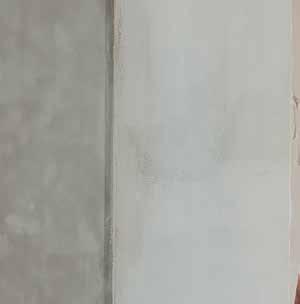


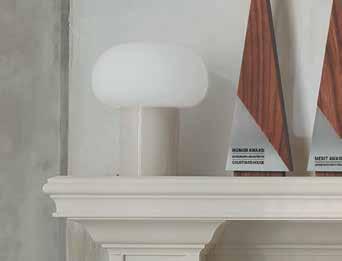


At the heart of Austin's literary scene, Black Pearl Books has become more than a store. It is a cultural hub where stories, voices and community converge.
Katrina Brooks remembers the spark vividly. In the summer of 2019, her family took a monthlong road trip that included a stop at a bookstore in Washington, D.C. By the time they returned to Austin, she knew she wanted to open a bookstore of her own. "The idea had never crossed my mind, but when the Holy Spirit speaks, you listen!" she said. That leap of faith became Black Pearl Books, a space devoted to knowledge, representation and belonging. "I o!en describe our store as a place of rest and resistance."
Black Pearl began as a pop-up and online store later that year. Brooks described those "rst months as focused and fast-moving. "For the "rst few months, it was just about taking books to the people. I knew the value of our stories and wanted to make them accessible to all who were interested," she said. Then the pandemic hit, canceling events and forcing her to adapt quickly. "We were months into a new business at the height of a pandemic… and there was no playbook for that." Even in the midst of change, she stayed committed to getting diverse books into readers' hands and creating what sociologists call a "third space"—a community gathering place beyond home and work where people can connect authentically across social divides.
Brooks' background in education, leadership and advocacy shaped how she envisioned Black Pearl. A love of education gave her a respect for knowledge and the importance of creating spaces where people feel seen and heard. Leadership grew naturally from that foundation, not as authority, but through listening, guiding and building community. Advocacy became the natural extension of both, ensuring the bookstore wasn't just about existing for its own sake, but about creating meaningful change. "Once you understand the barriers people face and the stories that o!en go unheard, it feels impossible not to speak up and act on their behalf," Brooks explained.
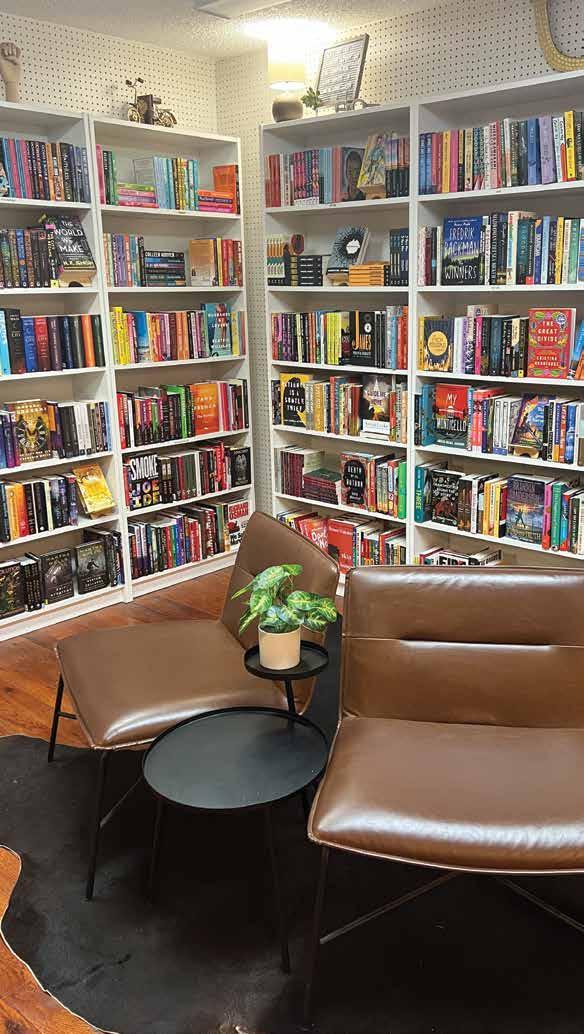

For Brooks, books have always been more than products on a shelf. "While laws and policies can alter structures, literature works at the level of the heart and imagination," she said. "Once something has words, it becomes harder to ignore. A story can draw you into a life you may never live and open your eyes to struggles and perspectives you might not otherwise encounter. That mindset shi! creates empathy and hopefully changes how an individual moves through the world."
"Together, these layers have taught me that culture is shaped by the stories we choose to tell, that every interaction is an opportunity to build connection and that sustainable impact requires both strategy and imagination."
Inside the store the impact is unmistakable. Customers o!en share emotional moments. A Black woman was brought to tears when she saw herself represented and could "be her authentic self in the space," said Brooks. Educators have come searching for titles to sustain their classrooms, administrators are grateful when authors present children with signed books to take home. "These constant reminders and acts of solidarity feed the soul of Black Pearl Books and solidify the need for our existence," she said.
As a third space, Brooks hopes to contribute social value to the neighborhood—fostering community and civility, where authentic conversations take center stage and gatherings are unplanned, serving as equalizers across age, gender, status, race or class. "If we can create a space where people gather, put aside their di$erences, learn, grow and imagine together – ultimately, if we can cultivate belonging, it will have a ripple outward e$ect."
Through carefully curated shelves, community conversations and partner-
ships with local nonpro"ts and educators, Black Pearl strives to transform the status quo. "If Black Pearl can introduce readers to stories that challenge assumptions, deepen empathy and preserve histories that might otherwise be overlooked, then we've done our job," Brooks said.
Even the name re%ects that purpose. While pearls are Brook's birthstone, she was speci"cally drawn to the black pearl and its symbolism of resilience and love. "The rare black pearl represents everlasting love, which aligns with our founding principle: Love One Another as I Have Loved You (John 13:34)," she said.
Brooks hopes the store will continue to serve as a neighborhood anchor. She imagines it as a gathering place where conversations come naturally and di$erences fall away. "I want my neighborhood to be more than just where we do business, I want it to be the heart of a community's social vitality and the grassroots of a democracy."
Her professional background gave structure to that vision. Public relations taught her to communicate with clarity and build trust. Her marketing MBA sharpened her understanding of how stories travel and resonate. Entrepreneurship gave her the resilience to adapt. "Together, these layers have taught me that culture is shaped by the stories we choose to tell, that every interaction is an opportunity to build connection and that sustainable impact requires both strategy and imagination," she said.
Black Pearl Books now stands as both a bookstore and a movement rooted in empathy, imagination and a commitment to representation. Brooks hopes the store continues to strengthen its neighborhood while helping shape a more inclusive cultural landscape across Austin. "Change starts at home," she said. "If we can create belonging here, it will ripple outward."
1. Succulent Native
Shannon Donaldson @succulentnative
2. Maaribu Home & Design
Serene Warren @maaribuatx
3. Love Cycling Studio
Stephanie Kincheloe @lovecyclingstudio
4. Brentwood Social House
Suzanne Daniels @brentwoodsocialhouse
5. Cupprimo
Amy Closson & Brad Closson @cupprimo
6. RESTART CBD + TCH
Shada & Shayda Torabi @restartcbd
7. Lady Collective
Ashley Sotolongo @ladycollective_
8. KESSHŌ
Liang Wang & Mark Huetsch @kesshocacao
9. Eliza Page Jewelry
Elizabeth Gibbson @elizapagejewelry
10. Parker + Scott
Jess and Ian Haisley @parkerandscott
Midcentury neighborhoods with a community-"rst spirit, Brentwood and Crestview know how to take care of their own. Wide streets lined with ranch houses and mature pecan trees give them an established quality, while yard signs for school fundraisers and neighborhood garage sales remind you this is a place where people put down roots. At Brentwood Park, you can catch everything from weekend soccer games to concerts in the park, and the neighborhood elementary schools are a point of pride.
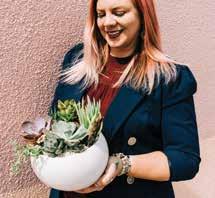

Local gems like Brentwood Social House reinforce their neighborly vibe, where parents catch up over co$ee while toddlers wander the yard. Succulent Native brings playful greenery that brightens porches across the neighborhood and Parker + Scott serves as the cozy general store these blocks have always needed.
Why pick Brentwood and Crestview?
Because they feel like Austin's version of a small town, where community shows up in every detail.









The Domain and North Burnet have grown into Austin’s “second downtown,” a vertical hub where tech, shopping and nightlife collide. The Domain itself feels like a city within a city, with luxury stores, trendy dining and new apartments rising around lively plazas. Just beyond, North Burnet blends sleek development with older homes, creating variety in both lifestyle and community. It’s urban, future-focused and buzzing with momentum.
Wooten and Highland sit at the crossroads of past and present. These diverse neighbor-
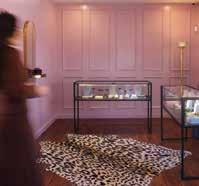

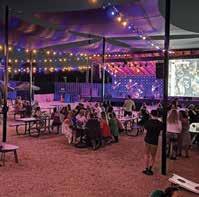
hoods pair taquerias and family markets with modest ranch homes and small apartments. Highland’s revitalized ACC campus adds fresh energy, while the streets still feel approachable and unpretentious. With icons like Veracruz All Natural, Black Pearl Books and Top Notch Hamburgers, the area captures Austin’s enduring character while welcoming what’s next.
Why choose The Domain/North Burnet and Wooten/Highland? Because together they have their "nger on the pulse while maintaining Austin's authentic roots.

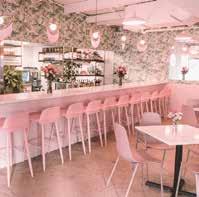

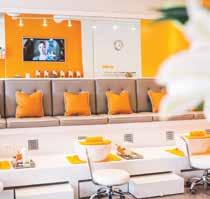
1. Tiny Pies
Amanda Wadsworth & her mother, Kit Seay @tinypies
2. Top Notch Hamburgers
Ray & Frances Stanish (founded), Kelly Chappell (current owner) @topnotchsince1971
3. Yard Bar
Kristin Heaney @yardbar
4. Phoenicia Bakery & Deli
Bob & Arpi Tcholakian (husband and wife) @phoeniciafoods
5. Sea of Beads
Courtney Keville @seao eadstx
6. Alador Jewelry
Catherine Serio @alador_jewelry
7. Taquero Mucho
Gabriela Bucio @taqueromuchoaustin
8. Veracruz All Natural
Reyna & Maritza Vazquez @veracruzallnatural
9. THE TEN SPOT beauty bar
Jennifer Howard-Brown @x.atxrosedale
10. Nina Berenato Jewelry
Nina Berenato @ninaberenato
11. Black Pearl Books
Katrina Brooks @blackpearlbooks
12. The Monogram Lady
Kathy Buck & Emily Preece @themonogramlady
13. Neiman’s Stylist
Alexandra Beck Reuvers @styled.by.alex
1. Moogie Pilates
Olivia Hockaday @moogiepilates
2. Blue Velvet Vintage Clothing
Susie & Jennifer Barker-Ben"eld @bluevelvetvintage
3. Honey Moon Spirit Lounge
Adrienne Wiggins @honeymoonspiritlounge
4. DrinkWell
Jessica Sanders @drinkwellaustin
5. Elisabet Ney Museum
The City of Austin @elisabetneyatx
6. Antonelli's Cheese Shop
Kendall Antonelli @antonellischeese
7. Zucchini Kill Bakery
Jessica Freda & Cece Moon @zucchinikillbakery
8. EveryBody’s Fitness Studio
Kassie Fuller @everybodys_ tness
9. 1972 Women's Sports Pub
Debra Hallum & Marlene du Plessis @1972pub
10. BookWoman
Susan Post @bookwomanaustin
11. Bureau de Poste
Steph Steele @bureaudeposteatx
Full of leafy streets lined with historic homes and inviting front porches where students, professors and longtime families cross paths daily. Shipe Park serves as a beloved gathering spot, and laidback neighborhood hangouts like Honey Moon Spirit Lounge keep the conversation going.
North Loop veers away from Hyde Park’s studious calm and leans into a scrappier, more creative edge. Blue Velvet Vintage anchors the strip with retro "nds, while BookWoman stands
Our mission at Moogie Pilates is to offer a full body ritual - every movement stretches and strengthens simultaneously. We use all of the Pilates equipment, the Reformer, Cadillac, Chairs, ladder barrel, and various props to enhance or challenge the Pilates repertoire. We focus on private clientele, duets and small groups to ensure everyone is getting the attention to detail they need to excel in their Pilates practice. We believe Pilates is for ALL BODIES and we teach to the bodies in front of us.
moogiepilates.com

as a longtime hub for independent voices. The neighborhood thrives on character over polish, a place where mismatched storefronts and murals feel perfectly at home. That mix of artists, students and locals sharing the same sidewalks gives North Loop its lively, unpredictable energy and lasting charm.
Why choose Hyde Park and North Loop? Because they blend historic Austin charm with a youthful edge.



Shop 1,000s of products to fit your lifestyle








SHOP AND DISCOVER
Gluten Free, Plant Based, and Low Carb Lifestyle products.
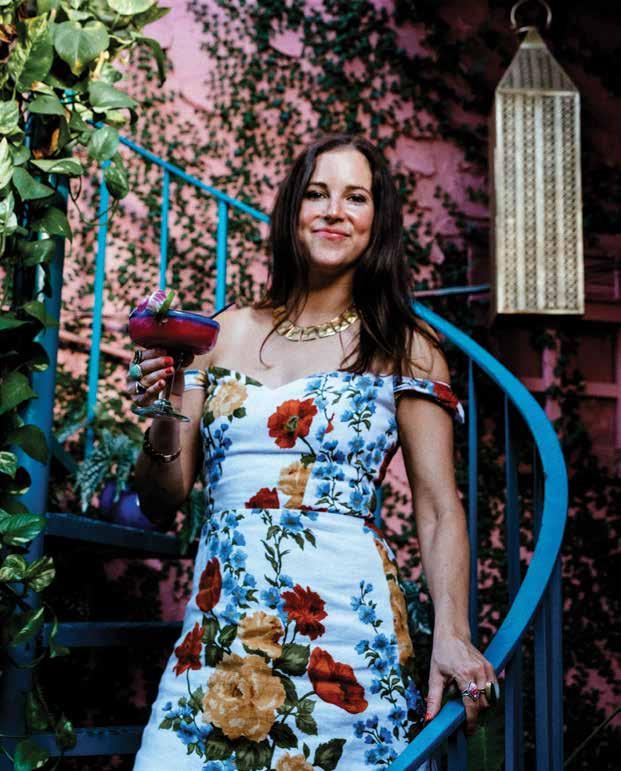
You've built a reputation for being the go-to resource for dining and lifestyle recs in Austin. What makes a place worthy of a Chekmark Eats mention?
Best Restaurant blog post or Substack, it really has to either challenge me or be so comforting and delicious that I can't stop talking about it. By "challenge me," I mean %avors that are so bold or emit a taste I haven't experienced in Austin before. I want to be taken to a new place through my tastebuds so much that I have to ask the server, "What was in that?" or "Where did y'all get this ingredient?" I want to feel educated, connected and like I'm discovering something. I also care about the style and design of the restaurant because that can take you to a new place sensually. The company you're dining with and a great playlist can convince you it's the best meal you've ever had!
Austin's food and hospitality scene has exploded. What feels different about it now, and what are you most excited to see grow?
When I was at UT, it felt like all we had was Tex-Mex and Whole Foods. I am excited to see so many places taking advantage of local farmers and produce, as well as all the new bakeries using Barton Springs Mill grains to make sourdough, cakes, pastries and croissants from scratch that we never had here before.
I love how community-oriented all the restaurants and chefs are as they support each other. Mexican spots, BBQ and steakhouses will always increase, but I am loving all the new Asian restaurants and hope for more Mediterranean and Israeli food soon!
My closest friends will say I'm a particular eater, but if you follow @ChekmarkEats, you'll think I eat everything! I mostly do, but I am passionate and speci"c about what I'm looking for. I LOVE seafood, raw tuna, chocolate chip cookies, gooey desserts, fresh vegetables and Asian and Mediterranean %avors. I like tender meat that falls o$ the bone and herbs and citrus that make simple proteins and vegetables shine.
For a restaurant to earn a place on my
You have an incredible sense of taste, literally and visually. Where do you get inspiration when curating your content?
I love color so I get inspiration from artists and architecture with bright colors, like Luis Barragán in Mexico City. I love French impressionists like Monet and the wild lines and colors from Picasso. Most of my inspiration comes from walking New York streets and seeing the fashion, walking into every bakery and restaurant to look at their tiles, plates and ceramics.

From modern towers to biophilic interiors, Austin’s architecture is shifting fast. Designer Janna Paulson has witnessed nearly four decades of change and sees a city coming into its own design language.
Austin's skyline and streetscapes look very di$erent than they did even 10 years ago. In the 2010s, the city was marked by glass high-rises downtown, the rise of the modern farmhouse in new neighborhoods and sleek minimalist remodels in central Austin. Today, the palette is warmer and more layered, and the conversation is more pointed: how can architecture connect people to nature, honor history and respond to growth?
The city is seeing a wave of contemporary homes that blend local limestone with expansive windows and metal roo"ng, a nod to mid-century modern design; new builds in old neighborhoods like Brentwood and Allandale highlight low horizontal lines and clerestory light and downtown continues to climb with towers like Waterline, set to become the tallest in Texas.
Major development projects are de"ning Austin's evolving architectural identity. The distinctive "Jenga building" (The Independent) at West Avenue and Third Street showcases contemporary stacked geometry that has become an Instagram favorite, while Google's sleek "sail tower" captures the modern aesthetic and highlights sweeping views of downtown and Lady Bird Lake.
Meanwhile, luxury hospitality projects like Soho House Austin demonstrate sophisticated design integration, blending Texas Modernism—which combines local materials native to Texas with a modernist aesthetic—with a contemporary Spanish approach through handmade materials like reclaimed chestnut cladding and terracotta %oors. Interior details include hand-carved wood elements at the central bar and an extensive art collection, 60% of which features local artists.
The ambitious Sixth and Blanco mixeduse development exempli"es Austin's approach to density, combining residential towers with ground-level retail spaces that maintain pedestrian scale through limestone cladding and generous landscaping that echoes the city's connection to nature.
These projects embody what Janna Paul-
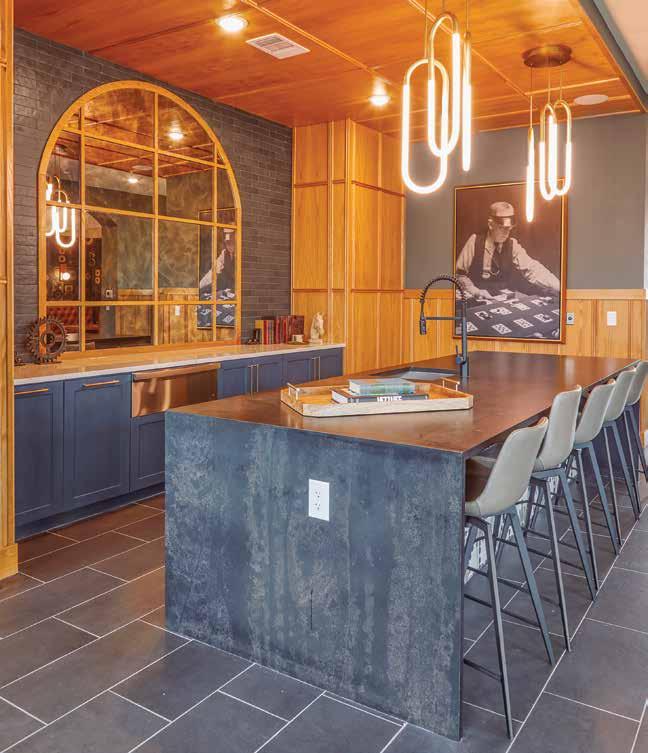
son, president and founder of PPDS, describes as Austin's current aesthetic. When asked to characterize the city's design direction, she only needed two words: "Modern and Biophilic." These concepts work hand in hand in this city, where clean lines and open layouts are paired with natural light, organic materials and a deliberate connection to the outdoors.
That grounding in place also shapes her design philosophy. "We try to design our interiors to honor the location of the property.
Austin is natural materials, interesting spaces via architectural details and lighting." For Paulson, every project starts with context, letting the site, the neighborhood and the city's character guide the details.
Paulson has run her "rm for 36 years, long enough to witness Austin's design evolution "rsthand. "I did corporate work in the 80s and it was blue, mauve or grey schemes. Very limited in creativity," she recalled. "Today, the spaces, whether they are o ce, retail, hospitality or multifamily, are much

more charismatic. They take into consideration the user more and have much more visual interest with color, materials and design solutions."
This evolution mirrors broader changes in how Austin approaches scale and density. Mixed-use developments like The Independent and Austin Proper Hotel have pioneered a distinctly local approach to high-rise living, incorporating Texas limestone and copper detailing alongside %oorto-ceiling glass. The trend extends to midrise projects throughout the city, where developers are increasingly required to respond to neighborhood context through materials and massing that honor Austin's low-slung character while accommodating growth.
The 2018 Carpenter Hotel exempli"es this thoughtful approach to development. Rather than demolishing the 1948 Carpenters Local 1266 Union Hall, Specht Architects preserved the mid-century structure as the lobby and restaurant while adding new hotel buildings around it. The design preserved nearly all heritage pecan trees on the site, incorporating them into courtyards and using wood from any compromised trees
as interior features. The new construction used locally-sourced clay masonry blocks and recycled steel oil-drilling pipe, achieving an integrated design that harmonizes new and historic elements while respecting the site's unique character.
Even in residential architecture, the conversation has shi!ed from pure modernism to what architects call "contextual contemporary"—designs that speak to the spirit and texture of the landscape alongside urban sophistication. This approach can be seen in new construction throughout established neighborhoods, where architects are balancing privacy needs with the desire for connection to Austin's outdoor lifestyle, o!en through courtyards, covered porches and strategic window placement that frames views while maintaining intimacy.
The forces shaping Austin's design identity have been building for decades. "The rapid growth started in the 90s. It accelerated the creative process and challenged us more," Paulson recalled. "We had people moving in from all over the country. Their expectations were di$erent than the status quo. It was fun to think outside of the box and grow creatively."
Technology has le! its mark, too. "First it was game rooms integrated with kitchens. Now it is unique touch down spaces whether commercial or multifamily," she said of current design shi!s. "People want their own private space to work, watch social media or create the 'Instagram Moment.' Each space has something over the top in design to encourage people to take their picture in front of it and post on line."
Her process underscores how much architecture and interior design converge. "First and foremost it is about people and how they use the space. We generally start with a spaceplan (which must meet City and Fire Code as well as ADA compliance). Then we elevate the walls showing millwork, windows and architectural features. Lighting and plumbing "xtures are researched and added to the elevations, and the ceiling plan is developed with coves, beams and co$ers accentuating special areas. Once the plans are complete, our next phase of work is construction administration. Then the fun part–determining which areas are custom. The team attends markets to research lines and "nd new inspiration, then presents the full scheme to the client for collaboration and approval. Finally, everything is scheduled, purchased and installed. That is the "ta da" moment we have been working three years to accomplish.”
A!er decades in the "eld, Paulson has straightforward wisdom for those coming up behind her. "Keep your overhead low," and remember, “you are only as creative as your imagination. Be genuine, sincere and truly care about your work (and colleagues). It makes a big di$erence." She sees this profession as a blank canvas and encourages new designers to do the same. "The "eld of interior design is an amazing sector to work in. The areas of focus are diverse and almost anyone interested in this area can "nd a niche that suits their personality," she said.
Whether corporate, hospitality, healthcare or residential, the opportunities are wide open. "It's fun and constantly changing. There is never a day that I don't learn something new." In a city still writing its architectural and design story, that wisdom feels like exactly the right foundation.
Luna Aziz started Legendairy Milk with $750 and a newborn. Ten years later, she's built a multimillion-dollar business without a single outside investor, staying rooted in Austin every step of the way.


In 2015, three months a!er her "rst child was born, Luna Aziz began the research that would turn into Legendairy Milk. Her "rst o ce was a tiny spare room in her North Austin home. “The air smelled faintly of herbs–moringa, black seed and shatavari and I had jars, notebooks and scoops scattered across the desk and a breast pump humming in the background. I remember feeling equal parts exhausted and obsessed with learning, with "nding answers.”
Aziz was grappling with polycystic ovary syndrome (PCOS) and low milk supply, searching for solutions that didn't exist in mainstream stores. Every night a!er putting her baby to sleep, she'd dive into her research, eventually opening an Etsy shop with $750, expecting to keep things low-key. Then one day, in a large Facebook group, a mom posted about Aziz's supplements, and 50 orders came in. "From that day on, it never really slowed down,” she said.
Aziz didn't take time to celebrate. She and
her husband, Joe Feehan, just kept moving, kept going. "I look back now and think I should've taken a minute to just breathe it in," she said. "It's something I try to remind myself of now: to celebrate the little wins before they blur into the next big challenge."
Before Legendairy Milk, Aziz worked at Bazaarvoice. "That experience really shaped what I wanted Legendairy Milk to stand for," Aziz said. "My previous workplace didn't feel like a safe or supportive environment for women, especially mothers. That experience lit a "re in me and Legendairy Milk became the opposite: a place where women could bring their full selves to work, where motherhood and womanhood wasn't seen as a limitation but a superpower."
Today, over 90% of Legendairy Milk's employees are Austinites. "From the beginning, I've been intentional about hiring women, especially working moms, because
"My previous workplace didn't feel like a safe or supportive environment for women, especially mothers. That experience lit a !re in me and Legendairy Milk became the opposite: a place where women could bring their full selves to work, where motherhood and womanhood wasn't seen as a limitation but a superpower."
they get it," Aziz said. "They understand the mission on a personal level. So many of us have lived the struggles we're trying to solve for. Creating opportunities for women to build meaningful careers while still having the %exibility to be present for their families has always been one of my biggest priorities."
For nearly two years, Aziz ran the operation out of her Techridge home. As the business grew, they moved through increasingly larger spaces in P%ugerville and o$ Heatherwilde. Today, Legendairy Milk occupies 10,000 square feet of o ce space near Chez Zee on Balcones and a 25,000 square foot warehouse on the East Side. On why she keeps things loca, she said, "Austin is where this all began. It's where I became a mom and where I became a founder. The community here is so supportive, especially for women-owned businesses.”
Aziz was born in Iraq and moved to the United States as an infant, settling in Austin in 2012. "I think there's something really unique about Austin. It gives you permission to be yourself," she said. "As a woman and especially as someone who came to this country as an immigrant, that kind of environment matters. There's an openness and a generosity in Austin's business community. I think that's why so many women-led brands thrive here. It's not just the innovation, it's the support. Austin makes you feel like there's room for everyone at the table."
Aziz built Legendairy Milk without a single equity investor or venture capital dollar. "Starting with $750 and no outside funding forced me to build di$erently," Aziz said. "Every decision mattered, every dollar had a purpose. There wasn't room for shortcuts or quick wins. I had to listen closely to our community because they were our investors in a way. I could listen, learn and evolve based on what real moms were saying," she said. "When you build something out of necessity and passion, not strategy decks, you never lose sight of why you started.”
In 2015, Aziz was trying to solve a problem that felt intensely personal. "I was a new mom, desperate to understand why

my body wasn't doing what everyone said it 'should.' The shame around low supply was so heavy and I realized that if I was feeling that way, so were thousands of other women."
When she started posting on social media about low milk supply and other breastfeeding struggles, she decided to talk openly, something the established brands in the market weren't doing. "I wasn't trying to be a brand voice; I was just being honest," she said. "I wanted to meet moms where they are, supporting each other through those vulnerable moments."
Aziz and Feehan have donated $100,000 to the Mother's Milk Bank of Austin, which provides donor milk to the tiniest and most vulnerable babies in neonatal intensive care units (NICU) around the nation, and $40,000 to Hand to Hold, a local nonpro"t providing mental health support for families with NICU babies.
"Those organizations mean the world to me because their missions hit so close to home," Aziz said. "My "rstborn was a lateterm preemie and those early days were some of the most overwhelming of my life. I remember how fragile everything felt, how
something as simple as feeding my baby could feel like an uphill battle. That experience gave me a deep respect for families with babies in the NICU and for the people who step in to support them."
Looking back at that spare room in Techridge where it all started, Aziz has a message for other Austin women considering their own leaps.
"I want women to know that you don't have to have it all "gured out to start. I certainly didn't. I had $750, a baby and a lot of determination. What matters isn't perfection, it's purpose. If you feel a pull toward something, listen to it. That's really how Legendairy Milk began, me, refusing to stop asking why my body wasn't doing what it was 'supposed' to, why there weren't better solutions for moms like me. I kept digging, kept learning and realized that o!entimes, you are your own best advocate."
Her "nal advice: "If there's one thing I hope women take away, it's that your challenges can become your calling. Don't stop asking why, don't be afraid to take up space and trust that the hard parts of your story might one day become someone else's lifeline."
Whether you’re snuggling into a chunky sweater or savoring pumpkin co ee, we each have our own ways of enjoying the season’s sensory delights. But have you also considered taking a multisensory approach to refreshing your home for the holidays?
At Copenhagen, we’re all about modern furniture and accessories that indulge your senses and bring you stellar comfort and durability. With a showroom in Austin’s Domain area at 4501 W. Braker Ln. and 6 additional locations across Texas and Arizona, we’re ready to help you cra spaces that are joyful and restorative. Here’s our quick guide to designing with your 5 senses in mind this holiday season.
To create a visually coordinated home for the colder months, we love color palettes anchored in neutrals, with statement pieces in rich, warm hues. Take, for instance, the brown leather and wood of the Alessia Sofa, or the cheerful red of the Siesta Chair. Add personality with your favorite holiday decor, and layer lighting options with table and oor lamps in areas where people gather. Don’t forget to clean and declutter your space so it’s neat and welcoming for all.
For many of us, seasonal music and movies are a core part of enjoying fall and winter. Whether you’re a fan of Christmas carols, jazz, or chill acoustic tunes, playing music is a great way to embrace the season. If you love holiday movies, consider media furniture with acoustic transparency so sound quality stays crystal clear. The BDI Elements Media Cabinet has a design that allows for acoustic transparency, ventilation, and remote access – not to mention a beautiful carved pattern that resembles sound waves.



For fall and winter, cozy, layered textures are ideal for lounging. Try adding a cable-knit blanket or velvet throw pillows to a sofa, or placing a plush rug underfoot, like the Westlake Shade Rug in ivory and silver. Balance out so surfaces with smoother textures that still have warmth to them, like leather and wood. We especially love the Stressless® Max Recliner in blue leather with power motion for fullbody comfort.
The strategic use of scent can transform the ambiance of a room. Scented candles are a popular choice, as are essential oil di users. For fall, few fragrances capture the season better than pumpkin, cinnamon, apple, or vanilla. Wintry scents like peppermint and gingerbread can evoke beloved seasonal treats – or go for an outdoorsy vibe with pine or cedar scents.
Some of our fondest holiday memories center on food. Keep taste buds engaged by cooking and sharing your favorite meals, or introducing new recipes into your rotation. Accommodate extra guests at mealtimes with an extendable table like the Tito. Even outside the kitchen and dining room, you can appeal to taste by placing candy, fruit, or snacks in colorful vessels like the Eva Bowl.
From bold colors to soothing textures, our team at Copenhagen will help you turn your home into a haven that delights all of your senses. Visit the Austin showroom at 4501 W. Braker Ln. or shop online at CopenhagenLiving.com. ◆
Decibel’s storytellers are reshaping how Austin is seen and heard
The moment Blair Waltman-Alexin saw visual storytelling in action, her career plans changed. "I was planning on working in print journalism, but once I started seeing how people were creating complex, compelling narratives with visuals, I was hooked," she said.
Since 2014, she's been creating those narratives at Austin PBS, now cra ing longform documentaries for Decibel, the station's community journalism program. The work hinges on connection. "I love getting a window into people's lives," Waltman-Alexin said. "A lot of my job is lming, and that requires making subjects feel comfortable with me and the camera."
That commitment to authentic representation drives everything she does. Decibel asks residents to grade whether their neighborhoods are properly represented on camera. "Since we started collecting data, we have never had anyone say we didn't properly showcase their neighborhood," Waltman-Alexin said. "We're not residents in all these areas, so to have folks who have lived there for decades tell us, yes, that's the community I see every day, it lets me know we're on the right track."
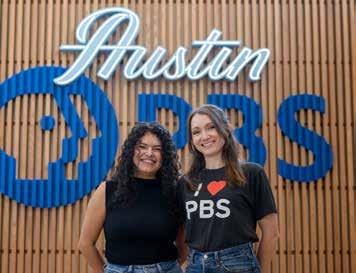
“The best stories happen when you show up, listen deeply and let the community lead.”
ackie Ibarra's rst story taught her everything about why journalism matters. "I learned about my dad’s boxing career that fell apart,” she said. “It was a story I've heard many times, but never truly listened until I sat him down for an interview. A er hearing the vulnerability in my dad’s voice in the story and his reaction to how his words were brought to life, I knew I wanted to continue to listen to people tell their stories."
That listening extends to every piece she creates for the Lone Star Emmynominated Decibel, where she leads social media and covers local stories. Her work has earned a NETA Public Media Award for Best Cross-Platform Content.
The program's approach mirrors her values. "Every story starts and ends with
community input," Ibarra said. "This means we dedicate at least a year to getting to know people in the community, building trust, showing up to events and really making an e ort to establish connections."
That patience and creativity? She learned it at home. "I always call ingenuity my superpower," Ibarra said. "Growing up, my family always found ways to be innovative with what resources we had. I use that skill almost every day in my work, whether it's coming up with video ideas or guring out how to execute a social concept."
Together, Waltman-Alexin and Ibarra are rede ning what community journalism looks like in Austin. Their work proves that the best stories happen when you show up, listen deeply and let the community lead.
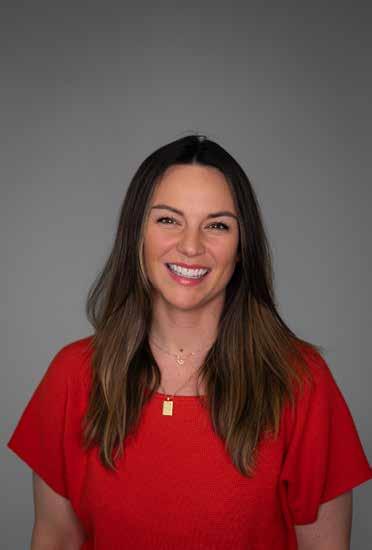
When Michelle Simmons started Slow North in her Austin kitchen in 2015, she was a new mom trying to make her home a safer, calmer place. She wanted products she could trust to be clean and gentle for her family. Her motivation now is about helping others nd that same sense of calm and connection through simple, natural rituals. “What began as a personal need has become a shared movement toward more mindful living,” she said.
Today, Slow North is a thriving community-centered business known for its essential oil candles, wellness gi s and creative workshops. Simmons leads with a focus on cra smanship, intentional growth and thoughtful formulations made with safer, natural ingredients. As a mother of three and advocate for slow, purposeful living, she's built a brand that invites people to create peace and presence in their daily lives.
"Entrepreneurship has been the greatest course in self-development I could ever take," Simmons re ected. "It mirrors back every area that needs attention...how I handle stress, communicate, trust others and trust myself." She's still learning to trust her intuition more deeply, know when to ask for help and feel comfortable being seen as a business leader in Austin. "Building Slow North has pushed me to grow in ways I never expected, and every challenge continues to be an invitation to do the inner work right alongside the business work."
"I'm a highly sensitive person, which used to feel like a challenge, but it's become one of my greatest strengths," she explained. Over the years, she's learned how to manage her energy and use it as guidance. Energy work has helped her tune in more deeply to what feels aligned and what doesn't. It allows her to stay centered, make clear decisions and move through business and life with more ease and trust.
Simmons hopes her work reminds people that slowing down and living intentionally can change not just their homes, but their lives. "If what we create helps someone feel more grounded, cared for or connected to themselves, that feels like a beautiful legacy," she said. Her hope for Slow North is to continue to be a space that brings people together through products, workshops and community, inspiring more moments of peace, presence and genuine connection in a world that moves so fast.
“What began as a personal need has become a shared movement toward mindful living.”

For Dr. Natalie Ledbetter, DAcOM, CRNA, business has never been just about numbers. As a Doctor of Chinese Medicine, a nurse anesthetist and a longtime entrepreneur, she has discovered that entrepreneurship can be one of life’s deepest teachers—a path that demands resilience, surrender, and vision in equal measure.
Natalie is the co-founder of L-Aesthetics & Longevity, one of Austin’s most respected medspas, and the co-owner of Upgrade Labs 5th Street, the city’s rst biohacking and recovery center. Together with her husband and business partner, Dr. Billy Ledbetter, she has built companies that help people look, feel and perform their best.
But success didn’t come overnight. “Starting and running a business forces you into constant growth,” Natalie shared. “It makes you look inward at your motives, your values and what you’re really here for. Each challenge becomes an invitation to surrender and then step forward again.”
At Upgrade Labs 5th Street, cutting-edge science meets holistic healing. Clients can build muscle in a fraction of the time with the Cheat Machine, improve cardiovascular health in just nine minutes on the AI-powered AI Bike and harness recovery tools like cryotherapy, red light therapy, PEMF and lymphatic massage. It’s health optimization once reserved for elite athletes and Silicon Valley pioneers—now accessible in the heart of Austin.
That blend of innovation and care has captured attention well beyond Texas. Natalie and Billy were featured speakers at the 2024 Biohacking Conference hosted by Dave Asprey, presenting alongside some of the world’s foremost voices in longevity and performance. Their expertise also reached a global audience through the documentary Biohack Yourself, and they will soon appear in an upcoming lm about visionary physician Dr. Jerry Tennant, known for his groundbreaking work on energy medicine and healing.
For Natalie, these platforms are a rmations of a mission she has been living for years: empowering people to reclaim vitality at every stage of life. Her background in both Eastern and Western medicine gives her a unique lens on wellness. At L-Aesthetics & Longevity, clients leave with elevated con dence through advanced skin and body treatments. At Upgrade Labs, the focus shi s to longevity, cellular health and performance — always with the belief that true beauty begins with inner vitality.
“Everything we do is about transformation,” she explains. “When a client leaves feeling stronger, clearer and more con dent, that changes how they show up for their families, their work and themselves. That ripple e ect is what inspires me.”
It’s also why Natalie sees business itself as a spiritual practice. The process of building two thriving companies has brought her into deeper prayer, meditation and connection—both with her husband and business partner and with the wider Austin community.
Her journey shows what’s possible when passion meets persistence. For Dr. Natalie Ledbetter, entrepreneurship isn’t just a career. It’s a calling—one that continues to shape her life and touch countless others along the way. ◆

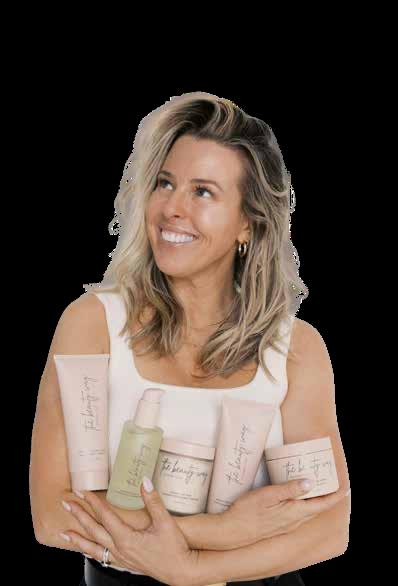



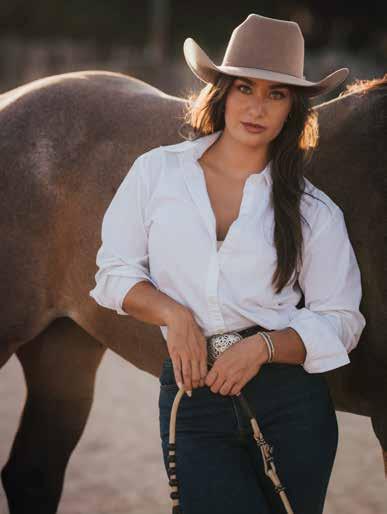
As the market recalibrates, character and strategy de"ne success from oZilker to Circle C Ranch.
South Austin's real estate market is entering a steadier phase a!er years of explosive growth. Prices are holding relatively "rm, down 1% to 3% year over year depending on location and condition, while homes are spending 65 to 80 days on market.
"You can really feel the change happening in South Austin. It's not just the city's skyline or the new developments, it's the overall energy," said Hailey Ryan, Real Estate Advisor with The Agency Austin. "From South Congress down to Sunset Valley, there's this mix of old and new everywhere you look. A sleek modern build will pop up right next
to a classic bungalow, or a trendy co$ee shop takes the place of a longtime corner store."
With tech employees, remote workers and young entrepreneurs shaping the area's rhythm, South Austin has earned a reputation for blending work, wellness and lifestyle. "You'll see folks shopping along South Congress or heading to a midday Pilates class, laptop in hand," Ryan said. "It's part of what makes South Austin feel so alive during the day."
In coveted neighborhoods like Zilker, Bouldin Creek and South Congress, recently renovated homes commonly list between $900,000 and $1.2 million. Zilker and South Lamar median prices hover near or above $1 million, bolstered by access to Barton Springs, the Greenbelt and walkability. South Lamar sees a wider range between $700,000 and $900,000 depending on size and condition.
Further south, Circle C Ranch median prices cluster around $750,000 to $825,000, while Cherry Creek ranges from $475,000 to $500,000, with premium properties reaching $850,000.
"Austin's real estate is in a moment of transition," Ryan said. "We've moved to a more balanced environment where both buyers and sellers seem to be calibrating."
This is bolstered by Austin's unemploy-
ment rate which remains strong at 3.7% as of August 2025, below the national average. Continued migration and job creation create steady demand in South Austin where buyers are drawn to proximity, community and lifestyle. According to Mark Sprague, State Director of Information Capital at Independence Title, mortgage rates are expected between 6% and 7.5% with appreciation normalizing into single digits, meaning pricing should remain steady while giving buyers more negotiating power as inventory rises.
Ryan sees the slower pace as healthy. "In this environment, sellers who price strategically, stage e$ectively and lead with clarity tend to fare better than those who rely on speed or hype," she said.
Looking ahead, Ryan anticipates more boutique projects and thoughtful remodels over large-scale subdivision growth. "Demand will stay strong among tech, creative professionals and long-time Austinites who want to remain close to the city's core," she said. Sellers will include long-term owners with signi"cant equity and investors repositioning a!er the post-pandemic boom. "Demand for the Austin-walkable and amenity-rich neighborhoods will remain strong as people look for convenience and lifestyle," Ryan said.
Ryan expects architecture to continue blending modern design with Austin's historic character. "The in%ux of tech, entertainment and the newer residents brought here by those jobs is reshaping Austin's real estate as much as its culture," she said. "Even though the city is growing more cosmopolitan, I'm hearing from a lot of clients that there's a real push to preserve the Austin spirit."
Despite growth pressures, South Austin's appeal remains. "If we can grow thoughtfully instead of just rapidly, I think we'll be able to keep the heart of Austin intact while still embracing the opportunities that come with change," Ryan said. "Long term, Austin's real estate will continue to mirror its culture: dynamic, diverse and deeply rooted in what makes this city unlike anywhere else."
1. Golden Mean
Grace Milligan
@goldenmeanaustin
2. Bouldin Creek Cafe
Leslie Martin
@bouldincreekcafeatx
3. Green Pastures Restaurant
Mary Faulk Koock @greenpasturesaustin
4. House Wine
Kerry White @housewineaustin
5. Swedish Hill
Liz Lambert @swedishhillaustin
6. Zilker Media
Paige Velasquez Budde @zilkermedia
7. Sightseer Coffee
Kimberly Zash & Sara Gibson @sightseerco ee
8. Devil's Details Boutique
Rebekka Adams
@devilsdetailsboutique
9. Secret Oktober
Cassandra Davis @secretoktober23
10. Date Nite Gallery
Landry McMeans @datenitegallery
Bouldin Creek feels like Austin’s creative front porch, a place where you never know what you’ll encounter on a morning walk. Cra!sman bungalows with bright trim sit beside front yards bursting with wild%owers and art, and the sidewalks are as much for conversation as for getting to your destination.
Along South First, neighbors know exactly where to "nd each other. House Wine



stretches evenings into hours of conversation under string lights, and Swedish Hill draws early risers with pastries still warm from the oven. Secret Oktober, a vintage and goth boutique, speaks to the neighborhood's o$beat soul. Murals refresh themselves with Austin's changing moods, and the quieter blocks might surprise you with a porch concert or a record player humming through an open window.
Why pick Bouldin Creek? Because it’s eclectic, creative and proudly lived-in.
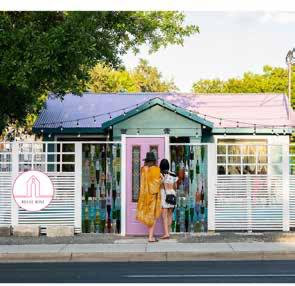
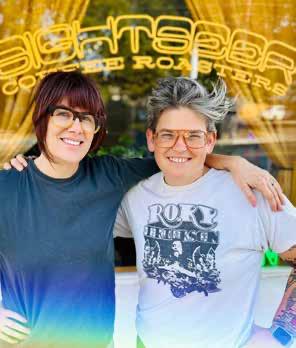
Known for their access to trails and green space and their proximity to Wimberly and Dripping Springs, Circle C Ranch and the other neighborhoods of South Austin stretch across Austin’s southern edge. The area is a backdrop for quiet walks, weekend adventures and the kind of everyday rhythms that feel like a neighborhood reunion. Kids ride bikes until the streetlights %icker on, families and friends gather at community pools or farmer’s markets.
Local spots shape the area’s personality as much as anything else. Taco Deli and Summer Moon, Torchy’s and The Dive ATX–and of course, the Wild%ower Center. In this part of town, all the gathering spots feel like the neighborhood's kitchen table, where families land a!er games or swap stories over weeknight dinners.
Why pick Circle C and South Austin? Because it’s a family-focused area that o$ers space while staying tied to the city.
1. Blue Gardenia Boutique Bethany Pendleton @blue_gardenia_boutique
2. Zen Blend Mind + Body Kristi Ludlam @zenblend
3. Empoderadas Gym Lily (previous AW feature) @empoderadasgym512
4. Blo Blow Dry Bar Bindhu Isaac @bloheartsyou
5. C’est Chic!
Jeanne Cooper & Melissa Greenwell @cestchicgi boutique
Blue Gardenia is a locally owned women’s boutique in Circle C, created to bring a fun, personal, and community-focused shopping experience to Austin. We help women "nd their new favorite things — from everyday fashion to gi s and home goods — all with honest styling advice and friendly service. Our mission is to make women feel con"dent, connected, and inspired every time they walk through our doors. bluegardeniaboutique.com

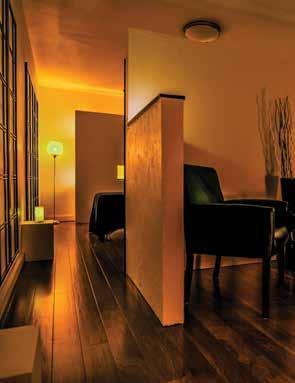

6. Circle C Café & Catering Emily & Chef Tray Horvath @circlecafe
7. Badass Mystic Michelle Amaranth @badassmystic
8. The Hive Shelly Weiser @hiveaustin
9. Reverie Books !ais Perkins @reveriebooks
1. The Bougie Foodie
Brianna Cryar @thebougiefoodie.co
2. Tiny Grocer
Steph Steele @tinygroceratx
3. Tesoros Trading Company
Kisla Jimenez & Johnathan Williams @tesorostradingcompany
4. Feathers Vintage
Emily Hoover @feathersvintageaustin
5. Limbo Jewelry
Anne Rutt-Enriquez @limbojewelry
6. the herb bar
Megen Mundy @theherbbar
7. Vinaigrette
Erin Wade
8. Arlo Grey
Chef Kristen Kish @arlogreyaustin
9. Magick Matcha
Rachel Barnecut @magickmatcha
10. Jackson Vaughn
Pam Jackson @byjacksonvaughn
11. Maufrais
Rachel Maufrais @maufrais.austin
South Congress is Austin’s main stage, where the heartbeat of the city is loudest. Tourists snap sel"es in front of iconic murals, locals slide into booths before the band starts. The air carries the scent of leather from boot shops that have lined the street for generations, and the neon motel signs glow a!er dark while crowds spill across sidewalks that never really quiet down.
The strip is as much about discovery as it is about spectacle. Tiny Grocer o$ers a
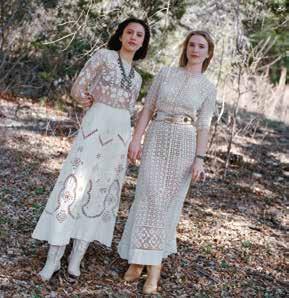
curated corner where everyday shopping feels like an event. Just down the way, Tesoros Trading Company layers the street with global textures, "lling its shelves with art and artifacts that echo Austin’s eclectic spirit. And above the bustle, chef Kristen Kish’s Arlo Grey reminds everyone that "ne dining can still feel playful in the middle of the chaos.
Why pick SoCo? Because it’s the epicenter of Austin’s energy, where every day feels like a festival.

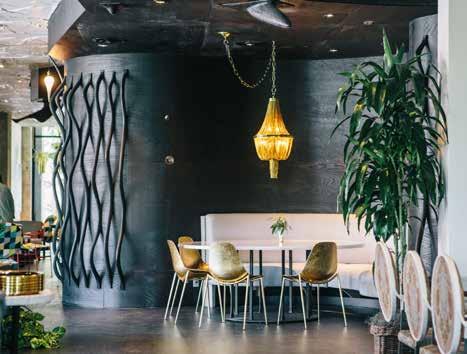

South Lamar and Zilker are Austin’s sweet spot for those who want food, music and outdoor life in one place. South Lamar serves as the gateway, lined with everything from late-night taco trucks to James Beard–nominated kitchens. It’s dotted with shops and studios that speak to Austin’s eclectic streak, like Potluck Vintage that o$ers curated and o$beat "nds.
Just beyond, Zilker Park stretches across the riverfront, home to Barton Springs
Austin Women's Boxing Club is where every punch is a powerful release. It's about the physical strength, enduring con"dence, and functional skills you'll develop with a tight-knit community that has your back. We're dedicated to helping you master new skills and get "t in a space designed for real training and lasting change without having to get hit.
Pool, the Kite Festival and ACL. On quieter days, locals slip into the Greenbelt for a swim or recharge at Viva Day Spa, where relaxation has become its own ritual. And for those chasing energy instead of calm, the Austin Women’s Boxing Club trains champions and "rst-timers side by side.
Why pick South Lamar and Zilker? Because it’s iconic and active, where everyday life brushes against big experiences.




1. Austin Women's Boxing Club
Julia Gschwind @austinwomensboxingclub
2. Potluck Vintage
Katie Vincent McClure @potluckvontageaustin
3. Matt's El Rancho
Gloria Reyna, Cecilia Muela, Cathy Kreitz, & Estella Martinez. @mattselrancho
4. Sundazed Stained Glass
Studio Lesleigh Arratia @sundazedglass
5. ATX Yoga Girl
Cynthia Aguillon Bernard @atxyogagirl
6. Sfngiday Austin
Christine Helen Olson @s ngiday
7. Fanm Djanm
Paola Mathe @fanmdjanm
8. Viva Day Spa
Shanon Mouser, Maya Aroch, & Laurie Aroch @vivadayspa
9. Blue Suede Shoes & Wine
Jennifer Parkman & Cynthia McMillioan @bluesuedeaustin
10. Fit & Fearless
Amie & Amelia @ tandfearless

What inspired your shift from the anchor desk to content creation and how has that shift changed your relationship with Austin?
I loved my job as a full time TV host but as we were growing our family the demand-
ing schedule became di cult to manage. I've always enjoyed creating content and promoting Austin businesses and events. It made sense to continue to do that more regularly while still having the %exibility to be with my kids.
I was fortunate as a morning show host to be able to share some of my personality with viewers. I really enjoyed getting to highlight all the things that make Austin great and as I've transitioned to creating more lifestyle content I've been able to share even more of my own perspective and voice. I love engaging with people and letting them see who I am.
As a woman building a life, brand and family in Austin, what empowers you, how do you tell others' stories and what do you hope women take away from what you share?
I'm empowered knowing I can design my own path that blends career, creativity and family in a way that feels authentic. I hope my journey shows other women they don’t have to "t into a single box. You can be ambitious and want to spend time with your kids, appear polished and down-to-earth. I try to approach telling my story the same as I tell others' stories–with honesty and intention, and sometimes a little humor rolled in. I allow space for vulnerability and connection and am mindful of how my content will impact those who view it.
I hope women "nd my content realistic. Whether it’s through parenting moments, making a house feel like a home, a silly take on something, or "nding joy in the everyday, I want them to feel good in the spaces they live in and the roles they play every day. I have a real issue with the term, "mom guilt" because I think it suggests wrongdoing, but showing up in di$erent ways as a mom is not wrong. All women should give themselves more grace and have more con"dence in the decisions we make related to parenting and careers.
What’s changed in Austin for the better, what do you hope the city holds onto and what would your perfect Austin day look like?
I've lived in Austin for more than 22 years and it's de"nitely grown and changed! I think the growth of social media has been one of the biggest drivers of that change–for better or worse. I hope the city always holds onto a college town feel where we all wear burnt orange on Saturdays in the fall, a love for live music, a diverse food scene, our incredible outdoor spaces and that "Keep Austin Weird" mentality. We're also big ACL Fest people and I hope that never goes away.
I'd start my perfect day with a walk on the hike and bike trail followed by breakfast tacos and hot co$ee. Then a boat ride on Lake Austin and a stop at Ski Shores for lunch. Dinner at Uchi followed by a nightcap at a downtown bar.

From New York's competitive kitchens to Austin's collaborative scene, Chef Jo Chan embodies the city's culinary transformation.
When Chef Jo Chan arrived in Austin from New York to take the helm at Eberly, she found something di$erent from the kitchens where she'd trained under culinary legends like Nobu Matsuhisa and Jonathan Waxman. "My career began in New York, where restaurants were constantly competing with each other and chefs and cooks were vying for positions within those spaces," she said. "It didn't leave a lot of room for camaraderie. A!er moving to Austin, I was drawn into a di$erent experience of the hospitality industry, one that focused on community building and collaboration."
She competed on Top Chef Season 19 in Houston and said that "especially a!er my loss on Top Chef, Austin became my haven and the place I call home." Around this time, Austin's culinary landscape was transforming into something that would soon earn Michelin recognition and place the city "rmly on the world's culinary stage, all while trying to maintain the experimental spirit that made it special.
In 2024, Texas received its "rst Michelin Guide, with Austin restaurants earning the most recognition of any city in the state. Cra! Omakase, which opened in December 2023, quickly earned a Michelin star and landed on Texas Monthly's list of best new restaurants for 2025, according to the publication. Meanwhile, longstanding Austin favorites like Barley Swine continue thriving in their 15th year by staying true to approachable "ne dining with reasonable pricing and also earned a Michelin star in the inaugural guide.

In 2024, Texas received its "rst Michelin Guide, with Austin restaurants earning the most stars of any city in the state. Cra! Omakase, which opened in December 2023, quickly earned a Michelin star and landed on Texas Monthly's list of best new restaurants for 2025, according to the publication. Meanwhile, longstanding Austin favorites like Barley Swine continue thriving in their 15th year by staying true to approachable "ne dining with reasonable pricing and also earned a Michelin star in the inaugural guide."
Even so, Chan said she isn't concerned about whether big money or celebrity chef investments will compromise
"Restaurants in Austin aren't bound by the same conceptual parameters as in other cities," Chan said. "It's okay to play around with your food and merge cultures and traditions here."
Austin's culinary soul. "Austin diners have discerning palates and an above average knowledge of food," she said. "I'm not concerned about the soul of Austin dining. Our people support the concepts that they believe in and aren't had by eccentric decor and name recognition."
Neighborhoods as culinary laboratories
Austin's food identity has always de"ed easy categorization. "Restaurants in Austin aren't bound by the same conceptual parameters as in other cities," Chan said. "It's okay to play around with your food and merge cultures and traditions here."

This experimental spirit manifests di$erently across the city's neighborhoods. Rainey Street, once a quiet residential area, has transformed into a dining and nightlife hub where historic bungalows house everything from Emmer & Rye (which earned a Michelin Green Star for sustainability according to the Michelin Guide) to food trucks serving Venezuelan arepas. East Austin has become ground zero for diverse global cuisines, from Georgian specialties at The Bread Boat to Filipino fusion at OKO. Hyde Park, where Chan opened Bureau de Poste in a former post o ce, represents the neighborhood bistro model that builds community through food.
Chan pointed to concepts like The Bread Boat as examples of what excites her about
Austin's current moment. "The Bread Boat features Georgian specialties like khachapuri and kubdari and is absolutely delicious," she said. "I think it's incredible to see less mainstream food cultures represented in Austin."
The shi away from spectacle
Running her own hospitality company and collaborating on private events has given Chan insight into changing dining preferences. "I've noticed people are trending away from elegant tasting menus and towards upscale food served in a casual setting," she said. "I'd love to see more everyday restaurants with loyal diners emerge in our city."
This democratization of highend dining re%ects Austin's broader ethos. The city now boasts worldclass omakase experiences at OTOKO and Cra! Omakase alongside casual barbecue joints like LeRoy and Lewis, which earned a Michelin Star while serving beef cheeks and frozen Big Red sangria alongside their brisket.
"I think Austin's food scene is as eclectic, diverse and innovative as the people who live in it," Chan said.
Her career evolution tells the story of someone who keeps evolving. "I have always sought out challenges with my career, never wanting to attempt the same thing twice," she said. "When I took the reins at Eberly, I was a young chef with a lot to prove to myself. I wanted to take over an operation that needed an overhaul and an identity. Partnership at Bureau de Poste was about creating something from nothing. Now, I'm getting back to the plate and connecting with my guests more intimately. I love creating magical and unique memories for my patrons."
Her advice to other women carving their own paths is direct. "Take chances and bet
on yourself," she said. "Every pivot in my career has been terrifying, but I'm a better chef and person for it. Don't be afraid of the challenge."
As Austin continues growing and changing, with development reshaping neighborhoods from Rainey Street to Clarksville, the question of authenticity looms large. Can Austin maintain its identity under the weight of so much growth?
Chan said she believes the answer lies with the diners themselves. "Guests everywhere let their money do the talking," she said. "I think we can trust that the authenticity of the city will be maintained by its people and their support of their favorite places."
It's a philosophy that extends to her own approach to "nding inspiration in Austin. Rather than pointing visitors to obvious tourist destinations, she recommends seeking out "unique activations and collaborations by Austin's best hospitality professionals," she said. "These special events allow for more fun and creativity. If you're looking for something that goes beyond the obvious tourist destinations, look for these special events."
This focus on community-driven food experiences, from pop-ups to collaborative dinners to neighborhood restaurants with loyal regulars, may be what ultimately preserves Austin's culinary soul. The city has recognition now. It has celebrity chefs and venture-backed concepts. But it also has discerning diners who remember what made Austin special in the "rst place: the willingness to experiment, the emphasis on local ingredients and the belief that great food should build community, not just impress critics.
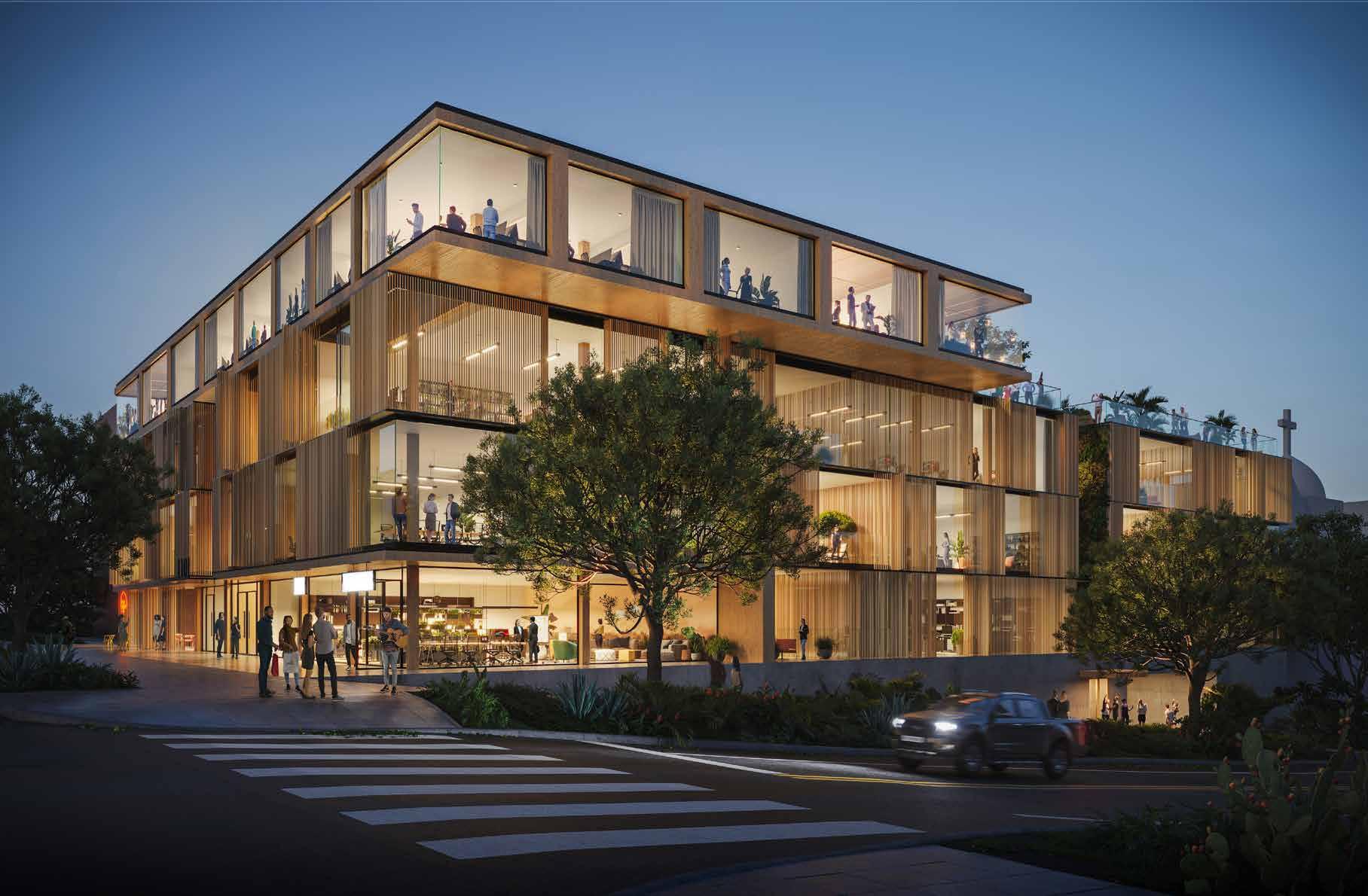

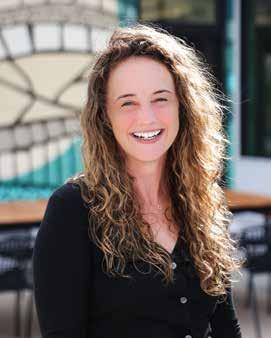

ustin's development landscape is navigating uncharted territory. Developers are grappling with new capital requirements and market uncertainties, while higher interest rates, steep construction costs and a cult and costly permitting environment have created what industry professionals describe as the most challenging building climate in recent memory.
For Jen Weaver, architect, realtor, development advisor and president of Vivid Development, these challenges represent an opportunity to fundamentally rethink how Austin approaches future growth and de-
"The building industry has faced significant challenges over the past few years, and I have immense respect for the perseverance of everyone in the "eld," Weaver said. "Development teams continue to rework programs seeking market alignment. Individual sites in high-density urban areas have been on hold and will continue to be on hold due to sti%ed demand and high
Weaver noted the shi! extends beyond residential development, as institutional groups pursue master-plan projects utilizing planned unit developments (PUDs) that will include high-rises outside of the downtown district. The planning and entitlement process will take years, allowing time for market fundamentals to align for construction at a later date.
Perhaps the most signi"cant change Weaver has witnessed involves how projects get funded. "Five years ago, developers en start projects and raise capital along the way," she said. "The biggest shi! now is the requirement for fully capitalized, 'all-in' equity from the start. This has led to the rise of multiple general partners teaming up on single projects, with equity partners taking a much more active, involved role in the development process itself."
While construction cranes still dot Austin's skyline, Weaver believes the city's most important developments won't be physical structures, they will be policy de-
velopments. "The challenges are well-documented: a catastrophic failure of infrastructure to keep pace, a housing market that has priced out the creative class that built this city's culture and a planning process that is o!en reactionary rather than visionary," she said.
Her solution centers on strategic policy implementation. Weaver points to Chapter 380 and 381 agreements as underutilized tools for addressing Austin's growth challenges. These economic development instruments allow municipalities to o$er loans and grants of city funds or services at little or no cost to promote economic development and stimulate business activity. "The most common form is a reduction in property tax in lieu of a public good o$ering: delivering public goods including infrastructure and roads," Weaver said. "This not only reduces the cost but the development organization and e$ort required for the city to deliver the same public goods."
Austin has completed 25 Chapter 380/381 agreements since 2003, including notable projects like Samsung, Apple and The Domain. While The Domain was initially controversial, it successfully increased property and sales tax revenue exponentially for the entire zip code for decades to come.
Weaver sees potential in how other Texas cities apply these tools. In Houston, the cost of o$-site %ood mitigation, a resilience measure, can be deducted from a developer's future property tax until the cost is paid back over time. This approach reduces the work for the city to build infrastructure while raising property values for a$ected adjacent properties.
Currently, Weaver is leveraging her network to connect developers with o$-market sellers on high-potential sites, focusing on podium projects in downtown-adjacent neighborhoods with strong fundamentals. Beyond these immediate transactions, she's conducting international research, planning to study global development trends in London this spring for an upcoming book, looking for innovative ideas

"What excites me is the pursuit of solutions on a global scale. My work has always been about solving complex puzzles: how to create attainable housing, walkable places and vivid communities. Austin's recent years have been a masterclass in the challenges of modern urbanism."
that can be applied in Austin.
"The great opportunity, and really, the necessity, is to harness that in%ux of capital and talent to build systems and infrastructure worthy of a 21st-century world-class city," Weaver says. "The opportunity isn't in more buildings; it's in building better."
This philosophy extends to her broader vision for Austin's future. "What excites me is the pursuit of solutions on a global scale. My work has always been about solving complex puzzles: how to create attainable housing, walkable places and vivid communities. Austin's recent years have been a masterclass in the challenges of modern urbanism."
While Austin has moved out of the "supernova" growth phase among real estate markets across the nation, according to the Urban Land Institute's recent report, real estate and development professionals expect Central Texas to remain a hot spot in 2025 for many types of construction and property development as the market fundamentals stabilize.
For Weaver, Austin stands at a pivotal moment. "The most important developments on the horizon won't be made of steel and glass; they will be policy developments," she argued. "The future belongs to a city that can expertly leverage its tools like Chapter 380 agreements or other public-private partnership tools to mandate public bene"ts, that updates its design guidelines and zoning for a new era, and that builds with resilience and equity as core principles."
As Austin's real estate market stabilizes and inventory normalizes, the city has an opportunity to implement the thoughtful, strategic approach Weaver advocates. The question isn't whether Austin will continue growing, but whether it will choose to grow wisely, creating the infrastructure and systems needed for "nancially sustainable development.
Cathy Romano, downsizing queen, helps clients navigate one of life’s biggest transitions with clarity, compassion and a plan that actually works.

Cathy Romano, a realtor, founding member of the Compass Luxury Advisory Group and expert in downsizing, helps clients navigate one of life’s biggest transitions with clarity, compassion and a plan that actually works.
Downsizing means stepping into a new chapter of life with intention and freedom. Cathy Romano, a realtor who prides herself on being the “Downsizing Queen,” has guided countless Austin clients through this transition. She knows the process involves more than selling a house. It requires emotional readiness, practical planning and honest conversations about what comes next.
Romano always starts the conversation with a question: Are you ready emotionally and physically to move? And if it’s a couple, she asks what she considers the most important question: Are you both on the same page about the decision?
“Downsizing isn’t just about moving to a smaller home; it’s about embracing and being ready for a whole new chapter in your lives,” she said.
If you’re wondering whether it’s time to make the move, Romano suggests considering the ve Fs: Future, Functionality, Finances, Fantasy and Family.
Think about where you want to be in ve or ten years. How do you want to spend your time? “How much time and money are you spending now on maintaining your home, and is that how you want to spend your time in the future?” Romano said. Some of her clients test drive living in a smaller space by renting in an area they have always loved before actually pulling the trigger. “Before you sell your large home and move to a smaller place, make sure you can live with less and not kill each other,” she said.
Be honest about how you use your home now. Empty rooms that once buzzed with activity might be costing you more in maintenance than they’re worth. Romano saw this play out during the pandemic when some downsizers regretted giving up extra rooms suddenly needed for home o ces and gyms. That’s when she pivoted her downsizing campaign into a “rightsizing” one instead.
“The nancial bene ts to downsizing might just be the silver lining,” Romano said. “No one wants to spend hard earned money maintaining a big house and yard, no longer used as it once was.” A smaller home o en means lower utility bills, less upkeep and more money for the things you actually want to do.
Maybe you’ve dreamed of walkable neighborhoods, golf course communities or a lock-and-leave condo. In Austin, Romano sees clients gravitating toward townhome and condo living in communities like the Grove or Mueller. Others are moving to golf course communities outside Austin o ering pickleball and other amenities. “It’s exciting to watch clients embrace this transition into a lighter lifestyle,” she said.
If you’re downsizing as a couple or family, make sure you’re all ready for the change. Being on the same page emotionally makes the process smoother and less stressful. Downsizing means facing decades of memories, furniture and keepsakes, which takes time and energy. “The biggest misconception about downsizing is that it will be simple to tackle the physical and emotional tasks of shedding possessions,” Romano said. “For most, it’s a big job.”
Her advice? Start now, even if you don’t plan to move for a couple of years or even decades. Sort through one room or area at a time using four categories: keep, donate, gi (or get your kids to nally come get their old yearbooks and trophies) and let go of. Romano has noticed that most clients feel a sense of freedom from getting rid of things. Some of her clients even seem younger and more energetic from the process.
Working with a realtor who specializes in downsizing means having someone who understands all the layers of the process. Romano connects clients with trusted junk haulers and estate sale professionals, and she reminds everyone that “this is not an ending, but an exciting new beginning that I feel honored to be a part of,” she said.
Cynthia Aguillón Bernard didn't plan to become a yoga teacher. Thirteen years ago, she was an Education Executive at Estée Lauder Companies, traveling nonstop and building a corporate career. Then she experienced a deep loss that changed everything. "I didn't know the rst thing about navigating all of the stages of grief let alone the anxiety that surfaced," Aguillón Bernard recalled. A friend introduced her to yoga, and instead of trying to escape her life, she became more present, learning how to consciously breathe and move through the emotions.
She traveled to Bali to fully immerse herself in the study of yoga and meditation, and a er experiencing a yoga class at her company's sales meeting, something clicked. "I knew then that I wanted to be on that side and I wanted to start by teaching kids and busy corporate executives," Aguillón Bernard said. She founded ATX Yoga Girl, which has brought calm, connection and mindfulness to Austin's wellness community through mobile, on-the-go holistic wellness programs for all ages.
Aguillón Bernard's classes cultivate deep relaxation, inner joy and support for becoming more present in daily life. "My secret superpower is that I'm really a big kid at heart and don't take myself so seriously," Aguillón Bernard said. That lightness is essential. "You are going to laugh at some point in class along with those deep breaths," she said. "Life is too short not to."
Aside from teaching adults, she
spends much of her time leading the next generation, from toddlers to teens, at special events, gardens, camps and a erschool programs. She's on a mission to teach meditation to 500 students within the next year. With her trauma-informed lens and signature style, she's brought her work to major stages like Austin City Limits, Commodore Perry Estate, The University of Texas and the Blanton Museum.
Her work is guided by a clear vision: creating spaces where individuals feel safe to reconnect with themselves physically, mentally and emotionally. "Through the practices I share, I want people to remember that peace and kindness are always within reach, no matter their life circumstances," Aguillón Bernard said. She hopes to plant seeds of presence and compassion that continue to grow long a er a class ends. If someone breathes more consciously, responds to stress with more grace or learns to listen kindly to their own body because of something they experienced in her teaching, she considers that a lasting impact. "The ultimate ripple e ect is when they pass it on and share with another person," Aguillón Bernard said. "That's the legacy, passing it on."
She's still learning lessons along the way. "I can't say 'yes' to everything," Aguillón Bernard noted. That realization led her to create the ATX Yoga Girl Mindfulness Method Mentorship, where she supports others who want to teach yoga. Aguillón Bernard is creating the spaces she needed when grief rst found her. She's proving that presence and playfulness go hand in hand and that healing can be found in mindfulness.

“I’m really just a big kid at heart—that lightness is part of the healing.”
About

The strength that defines Kim Pollok’s leadership is her ability to connect. She has a gi for bringing people, ideas and solutions together in ways that spark solutions, partnerships and growth. That team-focused approach has carried her from her early days as a human resources consultant with SWBC Payroll + HR to her current role as its CEO, where she leads with a philosophy rooted in relationships and care.
For Pollok, the motivation to lead this way came from raising two strong daughters. “My daughters have always been a huge part of my ‘why,’” she said. Watching them grow sharpened her focus on building spaces where people feel supported, valued and empowered. She’s motivated to create the kind of workplaces that her daughters and the next generation will want to step into.
Her journey at SWBC Payroll + HR re ects both vision and perseverance. Joining in 2010, she quickly made her mark by playing a pivotal role in the company’s PEO acquisition the following year. From there, she advanced to director of operations and ultimately CEO, building on more than 25 years of experience in HR and operations. Along the way, she
“I’ve learned that connection, not control, is what truly builds great teams.”
has become known for her ability to see potential in people and translate it into business growth.
When asked what she loves most, Pollok is quick to turn the spotlight toward her colleagues. “I love watching our team in action,” she said. “They’re smart, compassionate and relentless when it comes to solving problems for our clients.” Helping small and mid-size businesses, she explained, is especially rewarding. “These companies o en face big challenges with limited resources, and we get to step in as true partners—not just providing payroll, HR, bene ts and recruitment services, but helping them grow and take care of their people.”
Even with years of experience, Pollok admits leadership is a continual learning process. “I’m still learning how to give myself grace,” she re ected. “It’s easy to feel like you have to be everything to everyone, all the time. But I’ve learned that leadership isn’t about perfection, it’s about presence, listening and trusting the people around you.”
Through her journey from HR consultant to CEO, Pollok has learned the strongest leaders are those who connect rather than command. Her focus on building workplaces where people truly thrive stems from a deep desire to leave the professional world better than she found it. By giving small and mid-size businesses the tools they need to grow and care for their teams, she's helping build that future one company at a time.

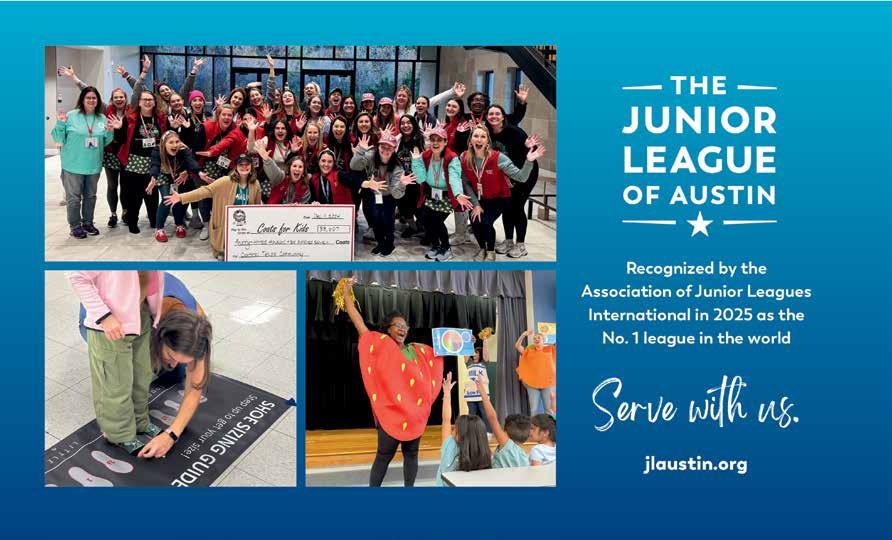
AtTrophyology, we believe recognition should be treasured, not tucked away. That’s why we cra our awards from wood, a material connected to the human experience and uniquely suited to express genuine appreciation. With its natural warmth, timeless beauty, and quiet strength, wood ensures every award is as distinctive as the person it honors.
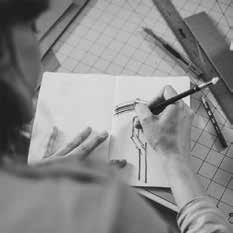

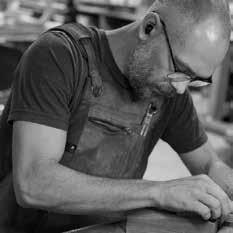

Architect-designed and artisan-cra ed in Austin, each detail re ects our commitment to helping leaders recognize excellence with meaning and style.
When recognition re ects leadership values, it’s presented with con dence and remembered with pride. Trophyology creates awards worth giving and keeping.
3 Small Plates Catering
SUBSCRIBE
Why reward a job well done with a trophy that’s not?


New builds, rising prices and shi!ing demographics make the area one of Austin's most dynamic neighborhoods in 2025.
East Austin continues to be one of the city's most watched markets, where colorful murals meet modern townhomes and longtime community roots meet rapid growth. Walk down East Cesar Chavez and you'll see the tension playing out in real time: a 1920s bungalow sits next to a sleek three-story townhome, while a beloved taqueria shares a block with a new co$ee bar serving oat milk lattes. Construction cranes rise beside corner stores that have served the neighborhood for decades. From Holly to Govalle, Montopolis to Mueller, the physical landscape tells a story of change, compromise and evolution.
From 2024 to 2025, East Cesar Chavez saw its median jump to $840,000 from $480,000, even though median price per square foot dropped from $620 to $566. This can hap-
pen when a neighborhood experiences wide variance in home size, condition, and lot type — like we see in East Austin. Days on market doubled from 62 to 127.
Holly's median dropped to $613,750 from $849,900 as the mix shi!ed toward smaller properties. Median per-foot values held %at at $529 due to the same variance we saw at play with East Cesar Chavez, while homes spent 61 days on market compared to 46.
Govalle's median pulled back to $572,500 from $632,500, with per-foot values declining by $120 on average, even as homes moved faster at 41 days compared to 97.
Mueller's median rose to $825,000 from $755,000, with price per square foot climbing about $60. Homes took longer to sell at 75 days compared to 40, but the master-planned community's amenities continue commanding premium pricing.
Montopolis remains the Eastside's entry
point at $300,000, down from $442,000. Perfoot values sit at $258, with homes spending 78 days on market.
Behind these numbers are real people making real decisions about where to live and how much to spend. The data tells one version of East Austin's story, but the human element tells another.
Lisa Moore, Luxury Real Estate Advisor with The Agency, returned to Austin a!er time away to "nd a market that had matured but kept its character. "The good news is the market here has corrected, and we're starting to see real opportunities open up for buyers," Moore said. "Interest rates have recently dropped and are predicted to drop two more times before the end of the year. For buyers, that means it's a great time to get into a home at a better price and re"nance later as rates continue to come down."
Tech professionals, remote workers and creatives drawn to walkable neighborhoods make up a signi"cant buyer share. Investors seeking rental income or properties with ADU potential compete in areas with zoning %exibility. First-time buyers priced out of West Austin "nd better entry points here.
Moore sees the shi!s "rsthand. "In real estate, that in%ux has raised demand across the board," she said. "Many of these newcomers value walkability, design and lifestyle—things that align perfectly with Austin's most iconic neighborhoods."
Displacement concerns remain real as rising prices and property taxes push longtime residents out. "The growth brings challenges alongside opportunity. "The harder part has been the a$ordability," Moore said. "Housing costs and rents have risen so quickly that it can feel discouraging for locals who've called Austin home for years." The balance between honoring East Austin's history and accommodating growth stays fragile.
East Austin remains one of Austin's most dynamic real estate markets, o$ering proximity to downtown, cultural vitality and relative accessibility. The area's story is still being written, one sale at a time.
Reyna and Maritza Vazquez turned a raspado trailer, long nights and unshakable faith in family into Veracruz All Natural—an Austin institution rooted in authenticity, sacrifce and community.
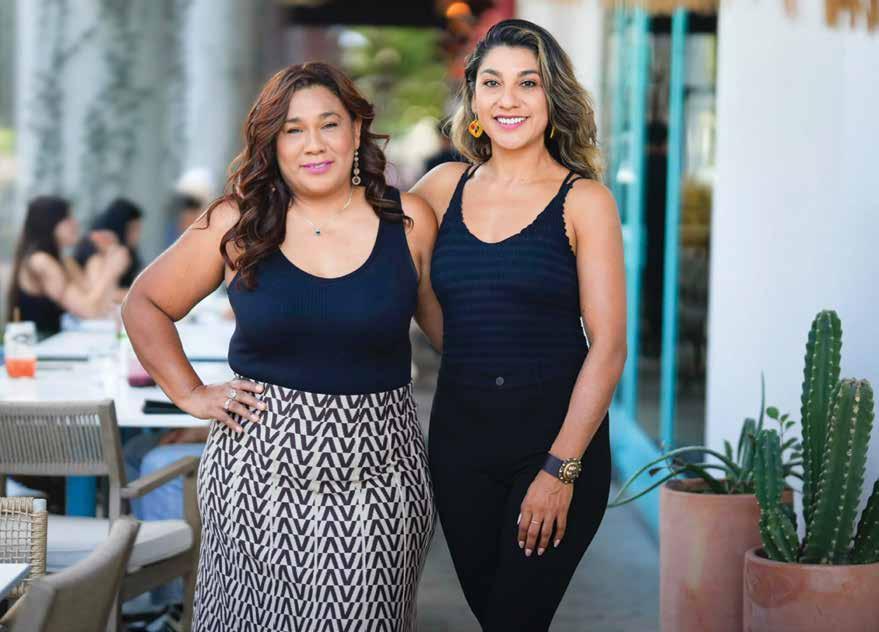
From their mother’s kitchen in Veracruz to some of Austin’s most beloved taco shops, sisters Reyna and Maritza Vazquez built Veracruz All Natural on resilience, family and a commitment to authenticity.
For Co-Founder and Chef, Reyna Vazquez, it was perseverance. She recalls her mother
coming home from the mercado with fresh ingredients, still full of energy a!er long days of working and caring for her daughters. “She taught me that everything you do should have purpose, community and heart,” she said.
Co-Founder and CFO Maritza Vazquez remembers standing at the stove with their
mother as she fried chiles for mole, the smoke stinging her eyes while their mother calmly reminded them that food “takes the time it takes.” Maritza Vasquez explained, “That respect for process is why I don’t believe in shortcuts, whether perfecting a salsa or balancing the books.”
When the sisters arrived in Austin, they
both worked long hours as waitresses, o!en "nishing double shi!s and then talking late into the night about how one day they would have a place of their own. “The dream was always in our conversations,” Maritza Vazquez said.
But Reyna Vazquez o!en felt restless. She missed the kitchen and wanted more than the routine of waiting tables. Watching their mother struggle with asthma while cleaning houses gave her a sense of urgency. People called her “Terca,” or stubborn, but she embraced it. “I believed that if I worked hard and planted the seed, one day it would grow into something bigger,” she said.
Their "rst business move was in 2006, when Reyna bought a raspado trailer with all the equipment for $6,000 dollars. She prepared the mieles with natural fruit in her depa—no additives, just fresh %avors, because, she said, “It re%ected the way I wanted to eat myself.” She reopened the same trailer in 2008, this time focusing on natural foods. She had to sell her Corvette to buy equipment and the sisters started making tortas on a hot plate. “The turning point came when the Austin Chronicle recognized us, and suddenly customers started asking for more options. They shaped our menu and pushed us to expand,” she recalled, “It was about listening to the community, following the demand and having the courage to reinvest everything I had into something bigger.”
Those early years were marked by sacri"ce because the sisters believed in what they were building. “Sleeping in a hot trailer, reinvesting every cent— we didn’t have much choice,” Maritza Vazquez said. “But those sacri"ces showed us that if we wanted Veracruz to grow, we had to give it everything.”

“My sister believed in me enough to become my business partner, and I couldn’t let her or my mom down. That gave me the drive to push forward no matter how hard it was,” she said. “Success doesn’t come overnight—it takes sacri"ce, discipline and the willingness to keep going,” she said. “It’s what built the foundation of everything we have today.”
For Reyna Vazquez, those sacri"ces also deepened their bond. She remembers herself, her sister and their mother working side by side, in it together.
And then the migas taco changed their trajectory. “That taco came straight from our childhood—it wasn’t designed to win awards,” Maritza Vazquez said. Yet when Food Network named it one of the top "ve


tacos in America, it catapulted the sisters into the national spotlight.
For Reyna Vazquez, the moment felt like validation of years in the kitchen. “When you’re in the kitchen every day, working nonstop, you’re just focused on getting the food right and serving people—you don’t always see the bigger picture. But winning that honor showed me how much people believed in what we were building.”
From the start, the sisters made a commitment to grow on their own terms. Independence meant moving at their own pace, making decisions with heart and staying


accountable to the community rather than investors. “It hasn’t been easy—sometimes it’s slower, but it’s honest. Every win feels earned,” Maritza Vazquez said.
That independence shows up in the details. At every location they cook with avocado oil, and their salsa macha is made with olive oil. “Customers o!en ask why we do it, and the answer is simple: because we refuse to cut corners,” Reyna Vazquez said.
Growth has never been about chasing opportunity for its own sake. Before opening a new truck or restaurant, Maritza Vazquez
“My sister believed in me enough to become my business partner, and I couldn’t let her or my mom down. That gave me the drive to push forward no matter how hard it was.”
considers the neighborhood, its people and its energy. “Expansion has to be about belonging,” she said. “We want every spot to feel like part of the community, not like we just showed up to take space.”
It comes down to independence, to owning 100% of their decisions. Since they did not take on investors or outside loans, every choice and expansion is theirs. “That independence sets us apart, and our community notices. Even as we grow into new trucks and locations, everything stays in the family, and that consistency matters. By staying fully independent, we can grow
in a way that honors the neighborhoods we serve, keeps our standards high and preserves the connection people have with Veracruz,” said Reyna Vasquez.
Perhaps the greatest reward has been seeing Veracruz become part of people’s everyday lives. “To know people come every morning for breakfast tacos, or bring their kids on weekends, or celebrate birthdays with us—that’s not just business, that’s being part of their story,” Maritza Vazquez said.
Reyna treasures the same connection. “Knowing that for so many locals in Austin, part of their daily ritual is to stop by for a juice or a taco means everything to me. Food is powerful—it’s not just about eating, it’s about nourishing people’s hearts and lives.” She continued, “It’s not only the locals; visitors who come to our city also become part of that ritual. To see Veracruz woven into people’s lives in such a meaningful way is one of the greatest rewards of this journey.”
The sisters agree that success comes from balancing tradition with change. “We stay true by remembering our starting point—our mom’s kitchen, our family recipes, our values,” Maritza Vazquez said. Those are the roots that will always anchor Veracruz.
Reyna Vazquez emphasizes creativity. “We don’t change the taste or the heart of what we make, but we evolve in how we connect with our community,” she said. From collaborations to social media to yoga classes with tacos a!erward, Veracruz continues to adapt while staying true to its origins.
Together, their perspectives capture what has carried Veracruz All Natural from a single trailer to a citywide institution: the ability to honor their past while growing with Austin’s future.
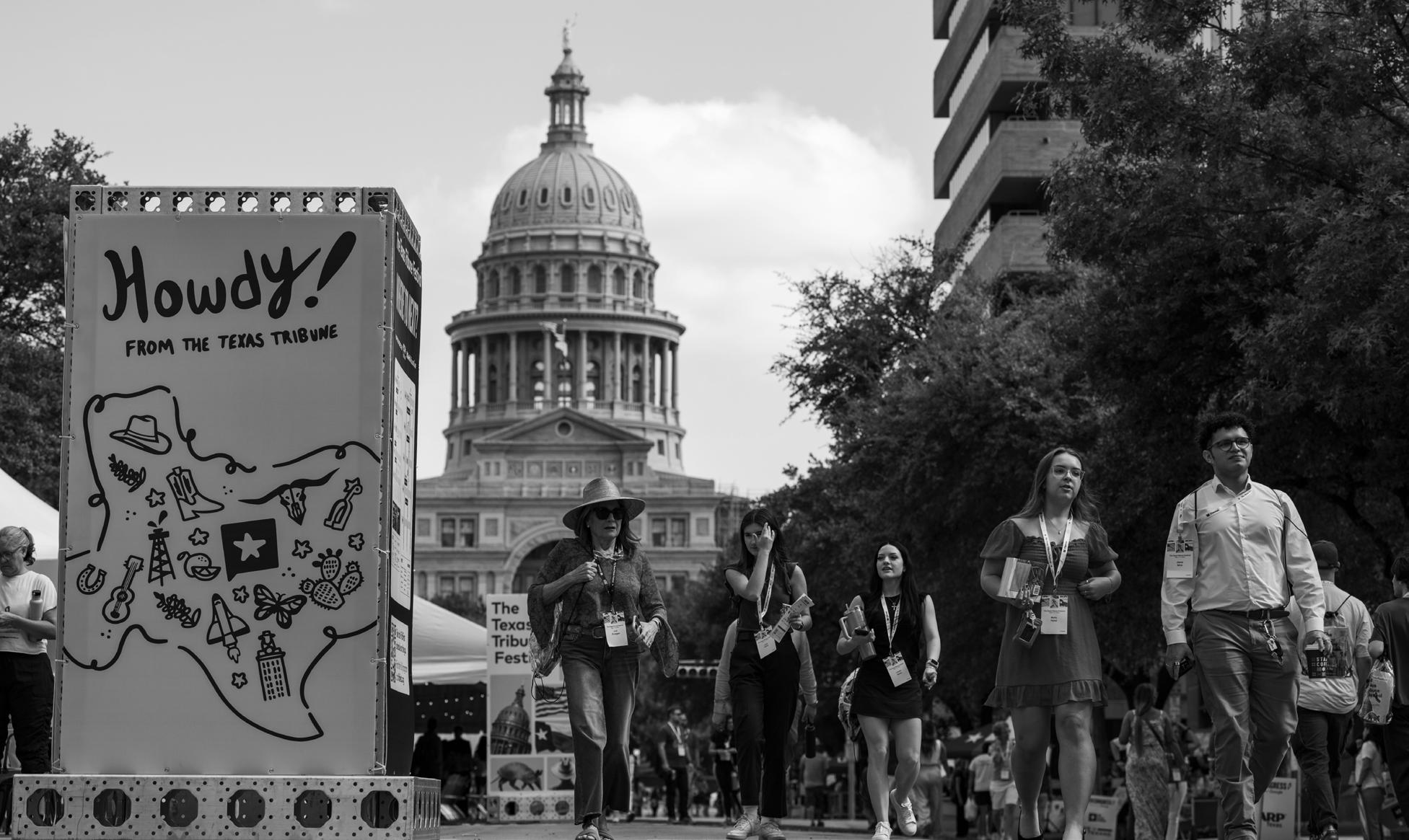
Get inspired by hundreds of bold thinkers, leaders and innovators, including:


Amy Klobuchar
U.S. Senator, D-Minnesota

Kay Bailey Hutchison
Former U.S. Ambassador to NATO; Former U.S. Senator, R-Texas

Jasmine Crockett
U.S. Representative, D-Dallas


Abby Phillip Anchor, CNN NewsNight
Join influential voices shaping Texas’ future for three days of exciting inter views and interactive experiences guaranteed to engage, challenge and surprise you.

TribFest isn’t just another political event it's where big ideas meet real action. is a 2025 TribFest media partner
On Austin’s east side, murals brighten the streets, music dri!s from patios and neighbors linger long a!er sunset. In Holly, East Cesar Chavez and Govalle, food, art and community shape the rhythm of daily life. Historic bungalows stand beside sleek modern builds, a reminder of the area’s constant evolution and layered history. Govalle slows the pace with tree-lined streets and greenbelt trails, yet creative energy is never far away.
Hillside Farmacy turns a century-old drugstore into a gathering place, where
antique tile and glowing glass cases frame mornings of co$ee and evenings of cocktails. By midday, mesquite smoke curls through the air from La Barbecue, drawing a crowd that knows good brisket is worth the wait.
When night falls, The Cathedral comes alive, its soaring space "lled with artists, neighbors and dreamers.
Why pick East Austin? Because it’s where tradition, artistry and innovation converge on every block.




1. Love and Roots
Kali Rambo & Jessica Chapman @loveandrootsatx
2. Buenos Aires Café
Chef Reina Morris and Paola Guerrero-Smith @buenosairescafeatx
3. CRAFT
Eli Winkelman @madeatcra
4. Oseyo
Lynn Miller @oseyoaustin
5. Hillside Farmacy
Jade Place @hillside_farmacy
6. Birdie’s
Tracy Malechek-Ezekiel (co-owner) @birdiesaustin
7. Women & Their Work
Rita Starpattern, Carol Taylor, Deanna Stevenson (founder) Chris Cowden (current owner) @womenandtheirwork
8. atxGALS / The Cathedral Mónica Ceniceros @thecathedralatx
9. Sky Candy
Winnie Hsia @skycandyaustin
10. La Barbecue
Alison Clem @la_barbecue
11. Clover + Maven
Ryan Doolittle & Elizabeth Hyman @cloverandmaven
1. Rosewood Acupuncture & Ayurveda
Kathy Du y @rosewoodacupuncture
2. Rebel Cheese
Kirsten Maitland & Fred Zwar (husband and wife) @rebel.cheese
3. Texas Farmers’ Market at Mueller
Carla Jenkins @texasfarmersmarket
4. Bottega ATX
Kati Luedecke @bottega_atx
5. Lilla and Beth
Megan Cooper @lillaandbeth
6. Thinkery
Jessie Stewart (new ceo) @thinkeryatx
7. Chasing Indigo
Jenna Sacco @shopchasingindigo
8. Colleen's Kitchen
Ashley and Sean Fric @colleensaustin
9. Buddy Bear
Megan Cooper @shopbuddybear
10. The Paper + Craft Pantry
Pei Sim @thepapercra pantry
11. Remodel Boutique
Michelle Flores and Kristen Harper @remodelboutique
Built on the grounds of the old airport, Mueller has become Austin’s model for modern community living. Wide sidewalks, pocket parks and a sprawling greenbelt make it one of the city’s most walkable neighborhoods. The weekly farmers market draws crowds from across Austin, families gather at the Thinkery children’s museum and joggers circle the lakeside trails at sunrise. It’s a planned neighborhood, but one that’s managed to grow into its own authentic homegrown character.

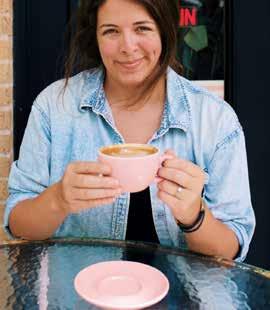
With a range of housing from apartments to modern single-family homes, Mueller attracts everyone from young professionals to retirees looking for a sense of community. Restaurants, co$ee shops and boutiques line Aldrich Street, giving the neighborhood its own city feel without the stress of downtown Austin.
Why pick Mueller? Because it o$ers the convenience of thoughtful design with the vibrancy of a neighborhood built to bring people together.
Rosewood Acupuncture & Ayurveda is a holistic healthcare practice located in the heart of East Austin. We specialize in Acupuncture, Herbal Medicine, Cupping, Ayurvedic Bodywork, and various types of therapeutic massage including Trigger Point, Myofascial Release, Swedish, and Sports Massage. We commonly works with fertility patients and expecting moms, people suffering from digestive issues, stress, anxiety, pain, injuries, and the countless other conditions that acupuncture and massage can help with!

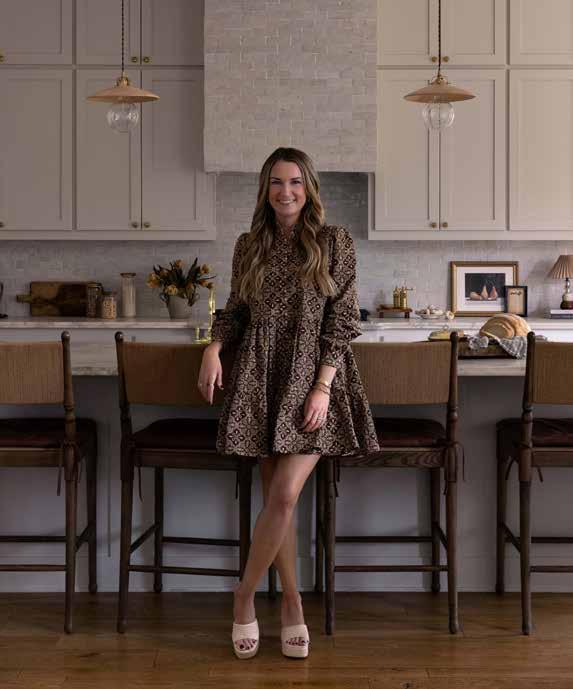
What’s your approach to creating home environments that refect both form and function, and how does the personality of a neighborhood infuence the work you do in a space?
I believe the best spaces strike a balance between beauty and function. At Audrey Scheck
Design, our goal is to create homes that feel thoughtful, layered and deeply personal spaces that truly re&ect the people who live in them. Every project is tailored to both the client and the character of the home, honoring its architectural heritage while weaving in individual style. We also love inviting clients to push just beyond their comfort zone, because those moments of risk are o en what deliver the ‘wow’ factor and make a home unforgettable.
For us, the context of a home is everything. We thoughtfully consider the history and heritage of both the house and its neighborhood, ensuring our designs feel rooted in their surroundings. Our goal is always to honor the original architecture while layering in intentional details that feel authentic to both the home and the people who live there.
If someone told you to design a home that ‘screams Austin,’ what three design

choices, materials, etc. would you go to frst, and what neighborhoods stand out to you for their design identity?
To design a home that ‘screams Austin,’ I’d start with charming architectural details for warmth and character, layer in earthy Hill Country-inspired tones and natural materials and "nish with playful pops of color or pattern. It’s all about creating a space that feels layered, inviting and full of personality.
Clarksville immediately comes to mind. It has such a rich history and character, with charming bungalows and eclectic details. I also think people are o en surprised by the pockets of modern, design-forward homes tucked into the neighborhood. It creates such an interesting mix of old and new that feels distinctly Austin.
For someone who wants to make their home feel more elevated but doesn’t have a full renovation budget, where should they start, and do you have a favorite local resource?
I’d start with furniture and accessories. Gradually collecting high-quality pieces that are beautiful, curated and meaningful to you can transform a space over time. I love blending new and vintage pieces in my own home. From there, small updates like fresh paint or updated hardware can make a big di erence. So "nishes are a simple way to elevate a room without a full renovation.
I love to shop at Take Heart! !ey have a great collection of homewares and gi s. It's one of my go-tos for my own home, our clients or friends!


Kristen Nix, a UT grad who built her frm as Austin transformed into a design capital offers a lens into what makes Austin interiors uniquely 2025.
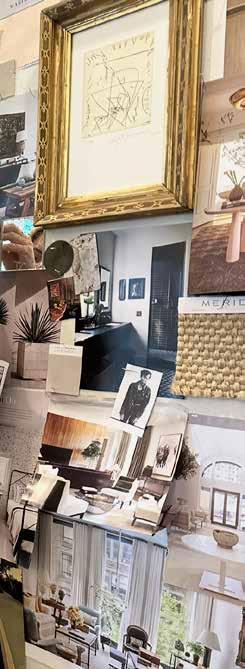
Austin's design landscape has evolved dramatically alongside its explosive growth, transforming from a regional creative hub into a nationally recognized design destination. National publications now regularly feature Central Texas projects, and the city has become a magnet for top talent and adventurous clients seeking distinctive spaces that re&ect the region's unique character. !e in&ux of major corporations has elevated expectations and budgets, creating opportunities for designers to push creative boundaries while maintaining authentic Austin character.
While the 2010s were dominated by white walls, modern boxes and farmhouse chic, today's interiors are leaning warmer, more layered and more personal. Designers are embracing earthy palettes of deep greens, browns and russets, along with vintage furniture and dark woods, a shi Architectural Digest calls a comeback of character and texture. Curved silhouettes and natural "nishes have also gained traction, re&ecting a broader desire for so ness and connection to both nature and community.
For designer Kristen Nix, whose portfolio spans Lake Austin to the Bahamas, Austin's aesthetic is set apart by its sense of ease. "Designing interiors in Austin is always inspiring because the city's relaxed lifestyle naturally &ows into the way people want to live in their homes," she said. "!ere's an emphasis on comfort, casual elegance and e ortless entertaining that re&ects the spirit of the city." !is philosophy in&uences how spaces function, with open &oor plans that facilitate gatherings and indoor-outdoor living–one of Austin’s best features.
!at spirit is o en grounded in the landscape itself. "Austin o ers a rare connection to nature with its rolling Hill Country views, shaded live oaks and the calming presence of water from Lady Bird Lake to Barton Springs, all of which in&uence how spaces are designed," explained. !e result is a distinctly Austin look: interiors that blur the line between indoors and out with what Nix described as, "natural materials, expansive windows and light-"lled layouts that celebrate the

beauty of the landscape while honoring the city's creative, laid-back vibe."
Lifestyle shi s are shaping projects in profound ways, re&ecting broader cultural movements toward health consciousness. "Today's clients are more focused on wellness than ever, making it a priority in how they design and live in their homes," Nix noted. Traditional luxury spaces are giving way to personal sanctuaries where cold plunges, infrared saunas and dedicated massage rooms are now among the most requested features. "Gone are the days of wine cellars and movie rooms!" she emphasized. !is wellness revolution extends beyond individual amenities to encompass holistic design philosophies that prioritize mental health, circadian lighting and biophilic elements that foster deeper connections with the natural world.
!e pandemic accelerated these trends, as homes became multi-functional spaces serving as o$ces, gyms, retreat centers and entertainment venues. Clients now demand &exibility and adaptability, with rooms that seamlessly transition between di erent functions throughout the day.
Nix's own aesthetic draws heavily on her background in fashion, including stints at Vogue and Neiman Marcus. "I've always loved the clean lines and e ortless cool of 90's fashion, and that same minimalist spirit is inspiring my design work now," she said. Nix described her current in&uence as a, "90's California neoclassical aesthetic— layered yet restrained, elegant but relaxed—drawing on the timeless in&uence of Richard Hallberg and Michael Taylor." !e appeal is in their staying power. She said, "!e balance of scale, texture and simplicity feels especially relevant today, creating spaces that are both re"ned and quietly powerful."
!is fashion-forward sensibility helps her navigate trends while creating spaces with longevity. "As for design trends that I feel people regret, anything you're seeing everywhere is always a recipe for becoming stale quickly. Buying art on vacation is a big trend and it's always a challenge to "t it into a space where it feels right," she noted.
With corporate relocations reshaping the city, Nix's clients o en arrive with global perspectives but desire livable spaces. "Our clients want their homes to re&ect warmth and authenticity," she said. "!ey rarely want spaces that feel uninvit-
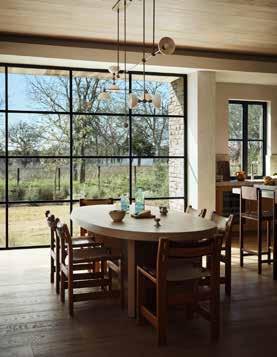
"Today's clients are more focused on wellness than ever, making it a priority in how they design and live in their homes."

ing or pretentious—instead, they gravitate toward homes that are approachable, comfortable and a genuine re&ection of how they love to live." Still, statement-making remains important. "!e biggest splurges are usually in creating a 'wow factor' with their guests and families in mind," she says. "One of our coolest was a trophy room / bar for an Austin-based athlete to showcase his accomplishments throughout his career."
Bringing these visions to life requires navigating today's evolving design landscape where econom-
ic realities require creative solutions. "Our industry has really felt the impact of tari s, especially since so many of the high-end goods we use are imported from overseas. I wish there were stronger manufacturing capabilities currently in the U.S. to meet the demand for quality products," Nix explained. "No matter the client, we always face moments of value engineering on our projects, "nding ways to balance design vision with today's economic realities."
Her advice to those who love style and are managing cost versus vision: "!ere are great options for less precious rugs for clients who have kids and pets, and "nding unique pieces at auctions can provide one-of-a-kind pieces while saving money without compromising quality.” She encourages small investments that o er big returns visually: “Elevated wall "nishes (Venetian plaster, lime wash, wood paneling) and wall coverings. Nothing changes a space like a "nished wall."
!is practical yet distinctive approach extends to how Nix sources inspiration and materials throughout Austin. "I love shopping at J + L Hardware for beautiful plumbing and hardware along with Canvas next door that o ers chic fabrics and textures. Supply showroom is a fun and happy source that packs a punch with color and pattern," she shared.
Rooted in Austin for nearly a decade, Nix credited the city with shaping her creativity. "I feel so lucky to live in Austin! We've been back for almost 10 years and I am constantly announcing to friends and family how lucky we are to live in this beautiful spot. !e topography and connection to the outdoors is a constant source of inspiration as many of our projects are located in unique settings on the lake or with views where this lifestyle is paramount. I also love how some neighborhoods feel like a small town and the community is special."
As Austin continues its ascent as a design capital, Kristen Nix's perspective bridges local lifestyle and global in&uence. Her wisdom for the next generation of women in Austin re&ects the opportunities that come with the city's growth: "Austin is such a great market to do business, with its mix of creativity, growth and supportive community. For women starting out, my best advice is to trust your instincts, get organized, build authentic relationships and stay con"dent in your vision—the city rewards passion and perseverance."
Michelle Bippus, Supervising Broker at KW Austin and founder of CTXPG, shares the pitfalls that can derail your home purchase and how to navigate Austin’s competitive market with confdence.

Buying your rst home in Austin should feel exciting, not overwhelming. But without the right guidance, simple missteps can turn the process into a stressful scramble. Michelle Bippus, Supervising Broker at KW Austin and founder of CTXPG, has seen it all and knows exactly where rst-time buyers tend to stumble.
It’s tempting to rely on headlines or advice from friends, but real estate is hyper-local, and one of the top mistakes Bippus sees is believing generalized information from news and social media. Austin’s market moves di erently than national trends, so what worked in another city might not apply here. Skip the noise and start with a trusted local agent who knows the neighborhoods you’re considering.
Your team can make or break your experience. “The agent, title company and lender you chose matter,” Bippus said. “Each of these can be the di erence between the homebuying experience being fun and exciting, or simply miserable.” Interview your professionals carefully and look for an agent with three main qualities: someone you connect with and feel comfortable around, someone who is competent and professional and someone who focuses on your needs and sets clear expectations.
A good lender will help you understand what you can a ord versus what makes sense for your monthly budget. “Many times what they can a ord doesn’t mean that’s what they want to pay for a monthly payment,” Bippus said. “Going to the max of the a ordability isn’t needed or advisable!”
Most agents and lenders do their jobs every day and make assumptions about what clients understand. “Tell them if you need more clarity. Clarity is power,” Bippus said. If you are in the deal, ask the agent what is the cost of waiting an hour to think about this. “Most of the time it will cost you nothing, and gives you time to think and learn your options,” Bippus said. When the stakes are higher, ask your agent what are the options you have and the risks with each, then make your call.
Asking questions also prepares you for the unexpected. Most buyers aren’t ready for multiple rounds of negotiation throughout the home-buying process. The initial o er is just the beginning. You’ll likely renegotiate a er inspections and possibly again if appraisal issues come up. Each round requires the same careful consideration and clear communication with your agent.
Austin’s competitive market rewards preparation. Bippus recommends starting your search about six months before you’re ready to buy. “Have an agent set you up on a search and start the process then,” she said. “You can ask questions, see the houses that come on the market and sit, see which ones sell quickly and see how the market responds. That way you are prepared when you decide to make an o er and you feel more con dent in what you choose to do.”
With the right team and a willingness to ask questions, you’ll be ready to nd your place in Austin. ◆

A Platinum Top 50 fnalist and one of Austin’s rising luxury agents, Hannah Nemes blends authenticity with a passion for selling not just homes, but the city itself — at a moment when Austin’s market is redefning its identity.
Hannah Nemes has carved out her place in Austin's luxury real estate scene, where her mix of sharp market knowledge and lifestyle savvy has earned her recognition as a Platinum Top 50 "nalist and one of the city's rising agents to watch. Her success re%ects not just individual talent but her deep understanding of how Austin's unique character drives its real estate market.
Austin's luxury market tells a di$erent story than the broader housing trends. While the city's overall market has stabilized, Nemes sees distinct patterns in her realm of high-end properties. "We are currently seeing a resurgence of people wanting more traditional style homes, over ultra contemporary and I can't get enough," she said. In neighborhoods like Clarksville, Pemberton Heights and Tarrytown, buyers are gravitating toward what she calls the "old money" aesthetic - character and timeless elegance over stark modern boxes.
"Even a lot of new construction builders in these areas are leaning towards more heritage-style architecture and design, which I think is respectful to the older homes and keeps their pedigree alive," she said.
Austin's emergence as a luxury destination goes beyond real estate. The city's cultural evolution has created the backdrop for Nemes' success. "Austin has been put on the map for food and beverage in the last 10 years, gaining international recognition for chefs and hospitality," she said. "Like any city, the more money there is coming in, the more opportunities for growth in all other areas. They all work hand in hand."
While some lament changes to Austin's laid-back character, Nemes embraces the evolution. "Some people may complain about the growth of the city over all and the fact that we may be losing 'the old Austin' and its laid back appeal. But I personally love all the new restaurants, shopping and hotels.”


This growth has created the perfect environment for her clientele - ultra-high-networth individuals who could live anywhere but choose Austin. "Austin luxury lifestyle is more quiet and under the radar which I think people of ultra high net worth appreciate," she said. "There isn't pressure to be %ashy or stand out. Austin has become popular for celebrities as well because people tend to leave them alone when out in public. I like that we are known for that."
"I love to show people what made me fall in love with this city!
The people, the food and nightlife."
What sets Nemes apart in Austin's competitive luxury market isn't just her market knowledgeit's her approach to relationships. First and foremost, she’s real, relatable and authentic, on top of being ethical, trustworthy and communicative. “What you see is what you get with me," she said.
This philosophy expands her client relationships. "I like to create long lasting, not only relationships, but true friendships with my clients. I want to be invited to the wedding and baby shower! So being an agent who my clients can lean on for absolutely anything is important."
This wasn't always her approach. In her career, she thought she needed to project a certain image. "When I "rst started I thought I needed to have a certain image and I've come to "nd people appreciate authenticity more than anything," she said. Nemes learned and now shares with younger women coming up, "You will attract the right clients for you doing business this way."
For Nemes, selling real estate means selling Austin itself. "I'm passionate about real estate, but I'm more passionate about selling Austin. Being a realtor, but also being a
tour guide is something I actually get quite a bit of enjoyment out of," she said. "I love to show people what made me fall in love with this city! The people, the food and the nightlife."
Her must-visit list re%ects Austin's blend of established charm and evolving sophistication: "Go-to stops on the list are always lunch at La Barbecue, drinks at the Proper Hotel, dinner at Red Ash or J Carvers, shopping on Soco and brunch at Mattie's or La Pascina."
As Austin continues its transformation, Nemes sees the city in a pivotal phase. "I think Austin is in its teenage years currently. Not quite a full blown identity crisis, but still "guring out who it wants to ultimately become," she said. "Are we going to stay small and keep our 'weirdness' that so many love, or grow and attract a more metropolitan crowd? It's hard to grow up and make changes, and not everyone likes that."
Despite the growing pains, she remains optimistic about Austin's investment potential. "As an overall investment, you'd be hard pressed to "nd many other markets that are as stable as Central Texas. People will continue moving here and we will continue to grow and evolve in a positive direction."
For Nemes, Austin's evolution creates opportunity rather than anxiety. Her success stems from understanding that luxury in Austin isn't about %ashy displays - it's about authenticity, character and the kind of understated elegance that drew her clients here in the "rst place. In a city still "guring out its identity, she's found her place by staying true to both Austin's character and her own.
Lisa Magick knows what it feels like to follow an inner voice. The UT Law graduate and former attorney has reinvented herself more than once, leaving courtrooms behind for sustainable design work that landed her on HGTV and in campaigns for Verizon and Tito's Vodka. Then, she bought a camper van and traveled solo around the world, hosting the TV series "My Van Life," earning features in CNN and Rolling Stone along the way.
When she met someone who shared a vision for a bathhouse they'd seen during a psychedelic journey, something clicked. "Something in me instantly recognized that I was meant to build this bathhouse with him," Magick said. "It started as a wild, intuitive 'yes'—one of those moments when logic steps aside and your soul takes the lead." She le everything behind to bring that vision to life, and what began as a leap of faith has grown into Bathe, Austin's rst immersive bathhouse and what she now calls "a movement beyond my wildest dreams."
The journey to creating that movement hasn't been linear. At the start of 2025, Bathe lost its bank funding with no backup plan for the $3 million construction project they'd spent a year permitting. Magick and her co-founder had a choice: fold or nd another way. They chose the latter. Within two months, they built and opened an outdoor bathhouse
garden with no business plan and no operations manual, just a whole lot of faith. One hundred founding members signed on, and the space has been evolving daily ever since. Now they're gearing up for Phase Two: the full-service bathhouse they originally envisioned.
This experimental spirit extends beyond crisis management. Magick's approach challenges conventional wisdom about what it takes to build something new. "People o en think you need credentials or experts to tell you how to build something new," she said. "I've learned that the most valuable insights come from real-world experience and intuition, not theory. Many 'experts' are so rooted in old systems that they can't see future possibilities." For her, a fresh perspective trumps formal training every time. "Creating something from nothing requires trust in your own vision, resilience and a willingness to learn by doing," she said.
That philosophy shapes everything about Bathe. It's a sanctuary for relaxation, community, pleasure and what Magick calls "radical presence." Through Bathe, Magick is proving that the most transformative work can happen when you trust yourself enough to say yes to what feels impossible, then gure out the rest as you go.
“Creating something from nothing requires trust in your own vision, resilience and a willingness to learn by doing.”


Jordan Flowers is perfectly suited to the business that shares her name .
ordan Flowers has been a orist for over half her life. Yes, that's really her name, and yes, it feels like destiny. For 20 years, she's turned her love for design and connection into a company built on the mission to make happiness bloom. As owner and president of Jordan Flowers & Events, she leads a team that pours their souls into bringing events to life and creating unforgettable moments across Austin.
"My inspiration for the path I am on came from numerous people in my life who supported my creative entrepreneurship from a young age," Flowers said. That early encouragement, paired with a natural love for design and bringing people joy, led her to where she is now.
Today, that passion has evolved into a business model that sets Jordan Flowers & Events apart from traditional orists. "While we do o er this, our primary focus is on large-scale events that require extensive planning and work," Flowers explained. "We individually hand-select every rental piece, decor item and custom signage and work within a budget to source all the necessary materials."
The logistics are staggering. They order speci c owers from farms and auction houses three weeks in advance to ensure peak freshness. On event day, the team arrives with vans, ladders, tools and pre-designed arrangements to transform a space in under three hours. "We navigate the logistical challenges of loading docks, coordinating with other vendors and managing clean-up, all while
being prepared for weather changes or unexpected client requests," she said. This careful orchestration behind the scenes ensures awless execution for clients.
There’s an icon who showed her what was possible. "I also have a great admiration for Martha Stewart, who could do it all: entertain, create, bake and be a wife and mother, all while making people happy with the three best things in life: food, fun and owers," Flowers said.
Juggling all of this has taught Flowers a lot about leadership. "A valuable lesson I'm learning is the importance of hiring professionals and trained experts," she said. "I've realized that entrusting tasks to incredible people—whether an accountant, a marketing agent or a personal assistant— sets you up for success. It's about learning to ask for help and trusting those individuals."
What keeps everything moving is Flowers herself. She works fast, setting the pace for her entire team so they can transform a venue and get out on schedule. "It always brings me so much pleasure to see all of our hard work come together and be nished," she said.
Twenty years in, Flowers is still chasing that feeling; the moment when all the planning, hauling, arranging and coordinating comes together into something that makes people happy. In a city that loves to gather and celebrate, Flowers has built a legacy of bringing joy to life, one bloom at a time.
“We pour our souls into every event — it’s about creating moments people will never forget.”

By Sarah Rosenberg

For over 90 years, The Junior League of Austin (JLA) has united local women in service, leadership and community impact. At the heart of that mission are the women who lead with both passion and purpose—qualities embodied by the membership and mission. With a membership of more than 2,300 women, JLA provides thousands of volunteer hours and hundreds of thousands of dollars in community funding each year to local initiatives that address hunger, education, health and basic needs across the region.
From programs like Coats for Kids, which provides warm winter coats to local children, to FIT – Food In Tummies, delivering weekend meals to students in Del Valle ISD and KICS – Kids In Cool Shoes, giving children access to new athletic shoes, the League’s signature programs serve as cornerstones of its mission. Beyond these e orts, JLA partners with more than 30 Austin-area nonpro ts annually.
JLA President Amy Settemeyer Miller, who has served in the League since 2016, volunteers her time to oversee the organization. Her focus for the 2025–2026 League year, “Purposeful Passion, Passionate Purpose,” is both a call to action and a reminder of why JLA exists: to empower women to serve with intention and authenticity.
“Every program and initiative we take on has to tie back to our mission and our members’ ‘why,’” she said. “My goal this year is to help every member see how their individual contributions connect to the League’s larger impact.”
Outside of JLA, she serves as Deputy Director of the Enforcement Division at the Texas Commission on Environmental Quality, where she leads statewide teams focused on fair and e ective compliance. Her blend of strategic thinking and collaborative leadership has become a hallmark of her term.
“When we lead with both passion and purpose,” she added, “our work has meaning that extends far beyond ourselves.”
One of the many events that JLA hosts to raise funds for the community is A Christmas A air® (ACA). Few events capture Austin’s holiday spirit like ACA, JLA’s largest fundraiser and one of the nation’s premier holiday markets. As Chair of A Christmas A air 2025 Golden Year, Jennifer Holt leads a 90-member committee of volunteers to
bring this year’s 50th-anniversary celebration to life.

“This event represents ve decades of tradition and transformation,” Holt said. “When I heard the song Golden Years by David Bowie, it just clicked — it perfectly captured the tone of celebration and gratitude I wanted for this milestone year.”
What began as 30 booths at the Driskill Hotel in 1976 has since evolved into a beloved Austin tradition at Palmer Events Center, featuring more than 200 merchants and attracting over 25,000 guests each year. The funds raised support JLA’s signature programs and community partners.
Holt, a Senior Wealth Strategy Associate with UBS Financial Services, has served in JLA since transferring from the Junior League of Oklahoma City in 2012. “A Christmas A air is a testament to what volunteer women can do when they come together,” she said. “It’s not just a market—it’s a movement that funds real change for families across Austin.”
For Rekha Roarty, the League’s 2025–2026 Communications Vice President, service and leadership are deeply rooted in her story in Austin. A native Austinite, Roarty joined JLA in 2015 to connect with other women committed to strengthening the city she calls home.
“JLA empowers women to lead and give back in tangible ways,” she said. “If we want to change the world, we start by changing our own communities.”
Professionally, Roarty is a partner at The Roarty Law Firm, PLLC, a boutique law rm focusing on construction litigation. Balancing her career and raising two young children with her husband, she credits the League for helping her hone leadership and organization skills that translate to every area of life.
“We are a League of women who lead with purpose and serve with passion.”
Together, the membership re ects women dedicated to developing their own potential while building a better Austin. Through vision, volunteerism, and collaboration, League members continue a legacy of service that has shaped the city for generations and ensures its bright future.


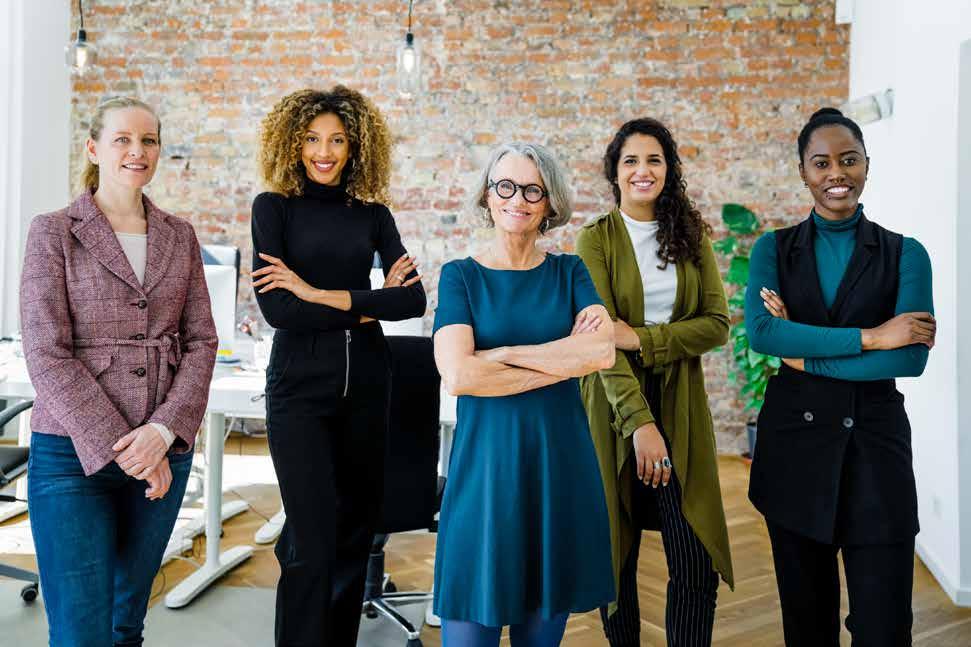
Your donated furniture, décor, and clothing do more than declutter. They help support Austin Habitat for Humanity's mission to build homes, communities, and hope in Central Texas.
Schedule a free donation pickup at austinhabitat.org/restore, or drop of your items at any of our three ReStore locations, open seven days a week.




Broker Khani Zulu reveals what's driving West Austin's evolution and where the market is headed next.
With Hill Country views, winding roads and lakefront estates, West Austin continues to be one of the areas shaping the upper tier of Austin real estate as its evolution re&ects a market that values intentional design, privacy and connection over pace.
According to current MLS data, median home prices in West Lake Hills hover around $2.5 to $2.8 million, Rollingwood averages $2.8 to $3.2 million and Tarrytown sees near $2 million, while Bee Cave and Steiner Ranch see approximately $875,000 and $950,000. Homes are spending about 47 to 73 days on market, signaling a shi from pandemic-era frenzy to deliberate, relationship-driven transactions.
West Austin's strength lies in how it pairs modern sophistication with a deep sense of place. Homes blend indoor and outdoor living, o en with access
to trails, lake views and expansive green space.
"Luxury in Austin is intentional and wellness-forward, modern architecture, indoor-outdoor &ow and a creative pulse," shared Khani Zulu, Broker Associate and Team Lead, Khani Zulu Group at Christie's International Real Estate Lonestar. "We're seeing longer consideration windows, thoughtful pricing and a premium for move-inready, architecturally consistent homes.”
At the higher price points seen in West Austin, interest rates matter less and cash deals are increasing. Buyers gravitate toward properties that feel fresh and "nished. "Organic materials, textural stone, steel, glass and serious wellness and outdoor features are what people are seeking including pools, outdoor living and kitchens, saunas, cold plunges and sport courts," Zulu explained.
!e in&ux of executives and creatives from the entertainment and tech industries has raised expectations for architecture, amenities and privacy. "Elevated minimalism with warmth—think custom millwork, collectible lighting, art-forward spaces and gallery-level glazing that frames the hills/lake. Studios, screening rooms, podcast spaces and serious wellness suites," Zulu said of West Austin's emerging aesthetic.
Market mechanics are shi ing alongside these design preferences and as Zulu noted, we’re seeing "more cash and compressed timelines, a "rmer price &oor in trophy pockets and increased o -market activity.” She added, “Buyers are decisive when a property hits the trifecta: architecture, setting and schools.”
!rough her work with Christie's International Real Estate, Zulu is able to view Austin alongside other global luxury markets. "!e coasts trade on legacy prestige," she said. "Austin wins on livability, design and its strong entrepreneurial scene. !e city is scaling to global-city price reality without losing its soul — welcoming, creative, health-centric and refreshingly unpretentious," she said.
Zulu sees higher demand for privacy, security and concierge-level living, yet the culture remains distinctly Austin: understated, nature-centric and community-minded, with philanthropy, food and arts patronage continuing to shape the scene.
Looking ahead, Zulu expects limited land to sustain scarcity in West Austin, with tear-downs and high-quality in"ll projects continuing to reset comparables in prime neighborhoods, while privacy and wellness features like 'gated drives, landscape screening, gyms/spas, cold/heat therapy and &exible guest/compound layouts' become standard.
In coming years, Zulu sees the design bar also continuing to rise, with architectural cohesion and cra smanship commanding premium pricing over standard luxury builds. Environmental features like solar power, battery storage, water-wise landscaping and high-performance systems will shi from optional upgrades to baseline expectations.
West Austin's growth continues to de"ne what luxury means in Austin, one rooted in design, lifestyle and belonging. "People are drawn here not just for what Austin o ers, but for how it makes you feel," Zulu said.
Kelly Johnson's mission to recycle everything possible has grown into a company reshaping how Austin thinks about junk.
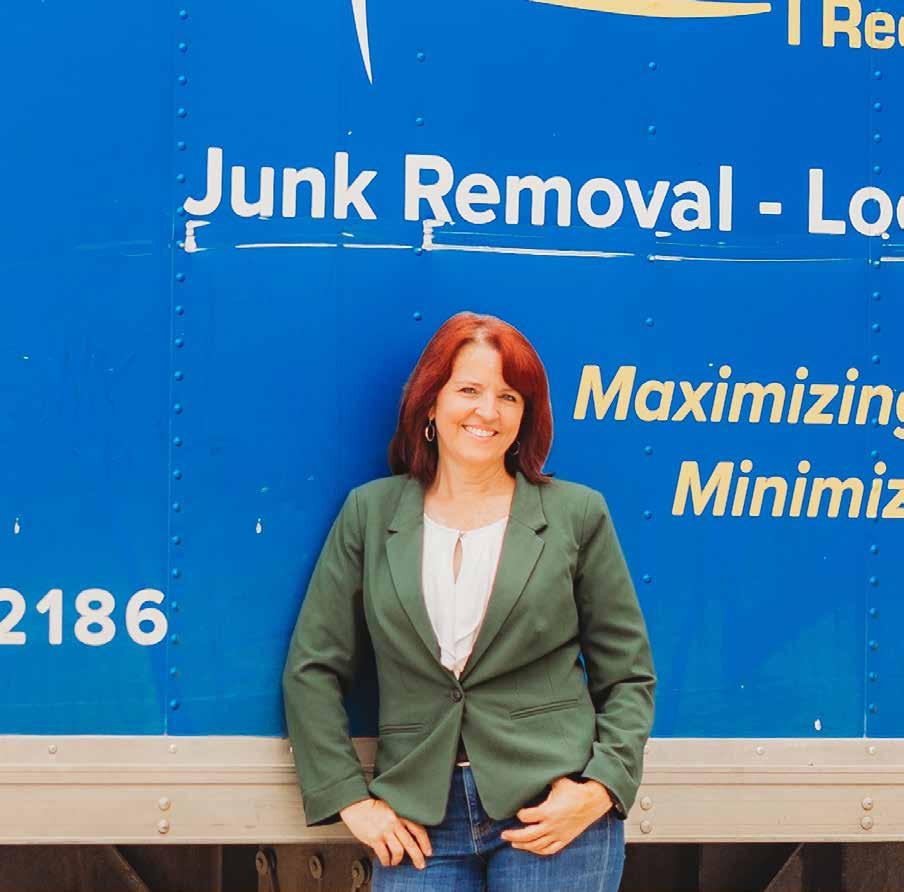
Kelly Johnson's mission to recycle everything possible has grown into a company reshaping how Austin thinks about junk.
On any given week the team at IREP Junk Removal might clear out a house full of furniture, deliver donations to a local nonpro"t and save a kayak or guitar from the land"ll. For founder Kelly Johnson, each collection is about helping the environment as much as it's about community and people.
Johnson has seen families furnish homes with items her crew salvaged, nonpro"ts stock their thri stores and neighbors relieved to know their discards will "nd a second life. "If we're pulling usable furniture, clothing or household items from apartments and businesses, I don't see waste—I see resources that can meet real needs in our community," Johnson said. !at perspective is what transformed a passion for recycling into IREP Junk Removal, a company now recognized as one of Austin's leaders in sustainable hauling.
Johnson's vision started with frustration at how much was being thrown away. In the restaurant industry she watched food and materials go to waste daily. Later, in property management, she witnessed an endless stream of furniture and household goods piling up with every tenant move-out. "!at's when my personal mission to recycle everything possible evolved into IREP," she explained. "I wanted to build a company that not only removed junk, but also diverted as much as possible from the land"ll—giving items a second life through recycling, donation or resale."
From the beginning she set IREP apart by committing to recycle or divert 60 percent of what the company hauls. It's a standard that requires more time and intentionality than simply dumping everything at a land"ll, but for Johnson that extra e ort de"nes the business. Listening to property managers, realtors and business clients shaped her services, from bulk item subscriptions for apartments to a resale
"I wanted to build a company that not only removed junk, but also diverted as much as possible from the land!ll—giving items a second life through recycling, donation or resale."


shop where Austin residents could see sustainable junk removal in action. !e shop turned casto s into a ordable "nds while creating a new revenue stream. "!ose strategies combined—sustainability, customer-focused solutions and creative reuse—are what fueled our growth and helped us land larger contracts like National Instruments," she said.
While the numbers tell a success story, Johnson measures things di erently. She counts the families who bene"t from donated furniture, the nonpro"ts whose budgets stretch further because of contributions and the volume of waste kept out of land"lls. "Pro"t keeps the doors open, but impact—the lives touched and the waste diverted— that's what success truly looks like at IREP," she said.
!at commitment extends to creative fundraising. !e company's "rst Junk 'N Jam event turned a basketball game into a community gathering that raised funds for ATX Kids Club and Joshua's Stage. "We wanted to prove that you can raise money in creative and fun ways, so we turned a basketball game into a community event," she said. "I saw "rsthand how our work could ripple out beyond hauling and recycling." !e e ect has been tangible. Johnson has watched single mothers furnish their "rst apartments with donated sofas and beds, seen nonpro"t thri stores restock their shelves and connected with families grateful their belongings found purpose beyond the curb. "!e impact has been powerful: I've seen single moms furnish their homes, nonpro"ts and entire families bene"t from what otherwise would have been thrown away," she said. "For me, that's the most rewarding part of this business—knowing IREP is helping both people and the planet."
Working across Austin's diverse neighborhoods has given Johnson a window into the city's character. In one area she might "nd vintage guitars and funky Keep Austin Weird décor, while another yields patio furniture and kayaks. "!at mix keeps our work interesting—and it means there's always something worth saving and re-homing," she said. What matters most is how the community responds. Austinites are deeply invested in
sustainability and many are energized by knowing their unwanted items will be recycled, resold or donated rather than wasted.
Johnson sees her work as part of a larger shi happening across the city. "Women entrepreneurs are reshaping Austin's business and community landscape by leading with both innovation and empathy," she said. "We're showing that businesses can be pro"table while still being people-focused and community-minded. For me, that looks like building IREP Junk Removal with sustainability at its core—proving that even in a traditionally male-dominated industry like junk removal, a woman-owned company can set a new standard," she said. "By prioritizing recycling, resale and giving back to the community, I've been able to create jobs, reduce land"ll waste and demonstrate that women can drive real change in how Austin thinks about business and sustainability."
To other women dreaming of starting a business, her advice is clear. "Trust your gut, bring your values to the table and don't be afraid to shake up industries that weren't built for you," she said. "When your business re&ects your vision, you're not just building a company—you're leaving a lasting impact on your community and your city."
Her leadership philosophy re&ects the same values. She focuses on building clear systems so her team feels con"dent, while also making space for their voices in shaping the company. "I want my team to see themselves as more than haulers— they're problem solvers, community builders and part of a mission to make Austin more sustainable," she said. "When they grow, the company grows."
Looking ahead, she plans to exceed the company's one percent revenue donation goal so its impact expands alongside the business. "By diverting items from the land"ll and reselling or donating what we can, we're doing our part to help the city hit its Zero Waste Goal—one couch, kayak and 'Keep Austin Weird' décor piece at a time," she said.
1. Anderson Parker
Michael McCollum Adams @shopandersonparker
2. Baldinuccis
Salvatore "Sal", Patricia, & Gabriel Baldinucci @baldinucci.pizza
3. Embellish Nails
Lisa McQueen & Wendy Pursch @embellishnailsaustin
4. Caramel Tan
Amy Maples and Karmin Lynch @carameltanatx
5. Art Galaxy Studio
Elena Naimushina @art_galaxy_studio
6. Spa Sway
Rei Leigh Harmer @spasway
7. A Health and Wellness Shop
Audra Smith @ahealthandwellnessshop
8. Synergy Dance Studio
Ms. Sherrie @synergydanceatx
9. Lemon Leaf Florist
Sydney Standard @lemonlea'orist
10. Dolce Salon
Sydney Standard @dolcesalonaustin
11. Schors
Rebeca Ortiz Barlow @schorsjewelry
12. Grove Hill ATX
Kristin Ernst & Ellie Ernst @grove_hill_atx
Westlake’s identity is tied as much to the hill and river views as it is to Friday night lights. The Chaparrals’ football games pull entire families into the stands, where neighbors catch up and kids grow up in a blur of cheer squads, marching bands and playo$ hopes. The terrain o$ers both space and privacy, with homes perched above the Colorado River or tucked into wooded cul-de-sacs.
Familiarity rings through Westlake like living traditions. At Baldinucci, families pick

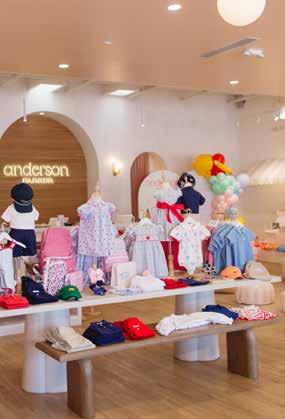
up fresh dough to turn dinner into a homemade event. The Tree House brings eclectic "nds from apparel to home decor to the Village at Westlake, while Dolce Salon keeps style as much a part of the routine as school drop-o$s and football practice. Together, they reinforce a rhythm that feels steady and deeply rooted.
Why pick Westlake? Because it’s where Texas pride meets Hill Country beauty.


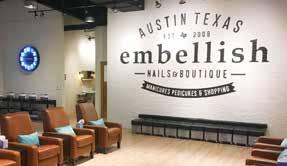




Tarrytown is one of those neighborhoods people fall for on the very "rst drive. Heritage oaks shade winding streets, where bungalows, midcentury homes and stately houses have anchored the community for generations. Families spill into Reed Park on spring mornings, and at May"eld Park, peacocks still strut as if they own the grounds.
History lingers at Lions Municipal Golf Course, but the neighborhood’s creative side shines at The Contemporary Austin’s Laguna Gloria, where art and sculpture "ll the

Established in 2007, The Steeping Room brings the world of specialty tea to your doorstep with a hand-selected seasonal list focused on regenerative and small farm harvest batches. Originally founded as a contemporary restaurant, tea lounge, and specialty tea store in Austin, Texas, The Steeping Room quickly became a beloved destination for tea enthusiasts and food lovers alike for over sixteen years. Today, it continues as a premier national source for some of the "nest teas available. Whether you're a lifelong tea drinker or new to the world of specialty teas, The Steeping Room remains dedicated to delivering high-quality, ethically sourced, and delicious teas to your cup.
www.thesteepingroom.com
lakeside gardens. Dining feels elevated yet inviting with Chef Ling Qi Wu’s Lin Asian Bar + Dim Sum as a destination in its own right, drawing neighbors and visitors alike. And at Little"elds, co$ee, tacos and open-air seating turn into an all-day gathering place for parents, friends and students.
Why pick Tarrytown? Because history and creativity share the same streets here.Extended (Paid) Blurbs for DIGITAL
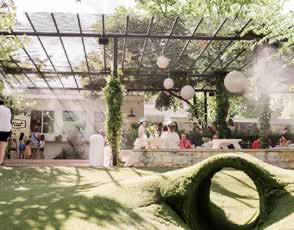


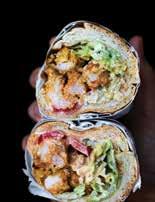

1. The Steeping Room
Emily Morrison and Amy March @thesteepingroom
2. The Contemporary Austin !e Contemporary Austin @contemporaryatx
3. Lin Asian Bar + Dim Sum
Chef Ling Qi Wu @linasianbar
4. Epicerie
Chef Sarah Mcintosh @epicerie_austin
5. Estilo
Stephanie Coultress Oneill @estilo_austin
6. Flo’s Wine Bar & Bottle Shop
Flo Conte & Adair Belisle @&oswinebar
7. Littlefeld’s @little"eldsatx
8. Sukha Yoga
Leah Cullis @sukhayogaaustin
9. ByGeorge
Molly Nutter @bygeorge
10. Elle's Boutique
Elle Florescu @elles_boutique___
11. Saving Face Aesthetic
Brooke Nichol @savingfaceaustin

How did you get started–were you intending to be an infuencer?
in Austin was like.
I don't think I set out to be a content creator and an in%uencer in Austin. I didn't really know my niche until I realized there is a big gap. There aren’t many Black women content creators here focusing on life in Austin, so I leaned into that space and realized my content is valued and needed.
What kind of feedback have you gotten from your community?
I've heard from followers, “I moved to Austin and found your page and now I'm living my best life.” People are genuinely thankful and say my page is a resource. That keeps me going and focused on spotlighting Black-owned businesses or things the Black community would enjoy and love.
That's the follower side, from a business side, I see tangible fruits of my labor all the time. I've had many times where I create a review spotlighting a business and the owner reaches out expressing gratitude because of their increase in followers and revenue generated shortly a!er
There are so many choices, and only one of you: How do you decide what to explore, especially as Austin continues to grow?
I prioritize new things and I have a series around things to do in Austin besides eating, so I scope out experiences that "t into those areas.
I also prioritize supporting Black-owned businesses, curators and people who care about the community and building spaces for us to get together.
I love that Austin is growing—there's always something to talk about, but there's also gentri"cation. People are struggling to feel valued and a part of the community, especially the east side, so I strive to be a source of positive diverse representation on what it’s like to live in Austin. 3
I worked at Google during the pandemic and as we were going back into the o ce, my timeline had a lot of return-to-work Google vlogs. I got inspired and thought, “I would love to share my experiences at Google Austin."
I vlogged my days going back into the o ce and those gained traction, then I started doing more full day-in-the-life posts because I kept on getting questions around what living
By Heather Bellino, CEO, Texas Advocacy Project
October was Domestic Violence Awareness Month (DVAM), and for many women, it is a month that is more than symbolic. It’s a reminder to pause and ask yourself—or someone you love—a di cult question: Are you safe?
Abuse is not always obvious. It doesn’t always start with bruises or broken bones. More o en, it begins quietly: controlling behaviors, verbal put-downs, jealousy disguised as love, pressure around money,or constant monitoring of where you are and who you’re with. Over time, these behaviors escalate, eroding con dence and creating fear.
At Texas Advocacy Project (TAP), we work with thousands of survivors each year, and one of the most common things we hear is: “I didn’t realize it was abuse until it got dangerous.”
Abuse is about power and control. Some signs that your relationship may be unhealthy include:
• Your partner isolates you from friends, family or nances.
• They frequently call or text to “check in” in ways that feel invasive or threatening.
• They belittle you, call you names or make you feel worthless.
• They control your money, your movements or your decisions.
• They threaten to harm themselves, you, your children or your pets if you don’t comply.
Recognizing these signs early can be lifesaving.
Many women wonder if what they’re experiencing is “serious enough” to seek help. That’s why tools like the Lethality Assessment are so important. This evidence-based screening helps determine the level of danger someone faces and whether there’s a risk of severe injury or homicide. Questions cover threats, access to weapons and patterns of escalating violence — helping survivors and advocates create an immediate, tailored safety plan.
If you are concerned about your situation, completing a lethality assessment with a trained advocate can clarify your next steps and ensure you have the right support in place.
A safety plan is a personalized, practical plan that helps you prepare for the possibility of future violence. It can include packing a
go-bag with important documents, setting up code words with trusted friends, knowing where you could go in an emergency and saving the number to TAP’s Legal Line: 800-374-HOPE (4673)
TAP provides free legal and social services to Texans experiencing power-based abuse. We o er protective orders, custody and divorce assistance, legal advocacy and connections to shelters and counseling —all designed to help survivors move from crisis to long-term safety.
If you’re reading this and realizing that your relationship may not be healthy, know this: you are not alone and there are people ready to help you.
1. Trust Your Gut. If you feel unsafe, believe yourself.
2. Reach Out. Call TAP’s Legal Line or a local domestic violence hotline.
3. Create a Safety Plan. An advocate can walk you through the process.
4. Document Everything. Save texts, take photos, write down dates and incidents.
5. Consider a Protective Order. TAP can help you secure legal protection if you need it.
Every survivor’s journey is di erent, and there is no “right way” to leave an abusive relationship. What matters is that you have choices and the tools to make the safest decision for yourself and your family.
This October, let’s remember that domestic violence thrives in silence. The most powerful thing we can do is talk about it, learn the warning signs and connect ourselves and others to resources that save lives.
If you or someone you love may be in danger, call TAP at 800-374HOPE (4673) or visit TexasAdvocacyProject.org to learn about your legal options. Your safety is worth ghting for. ◆

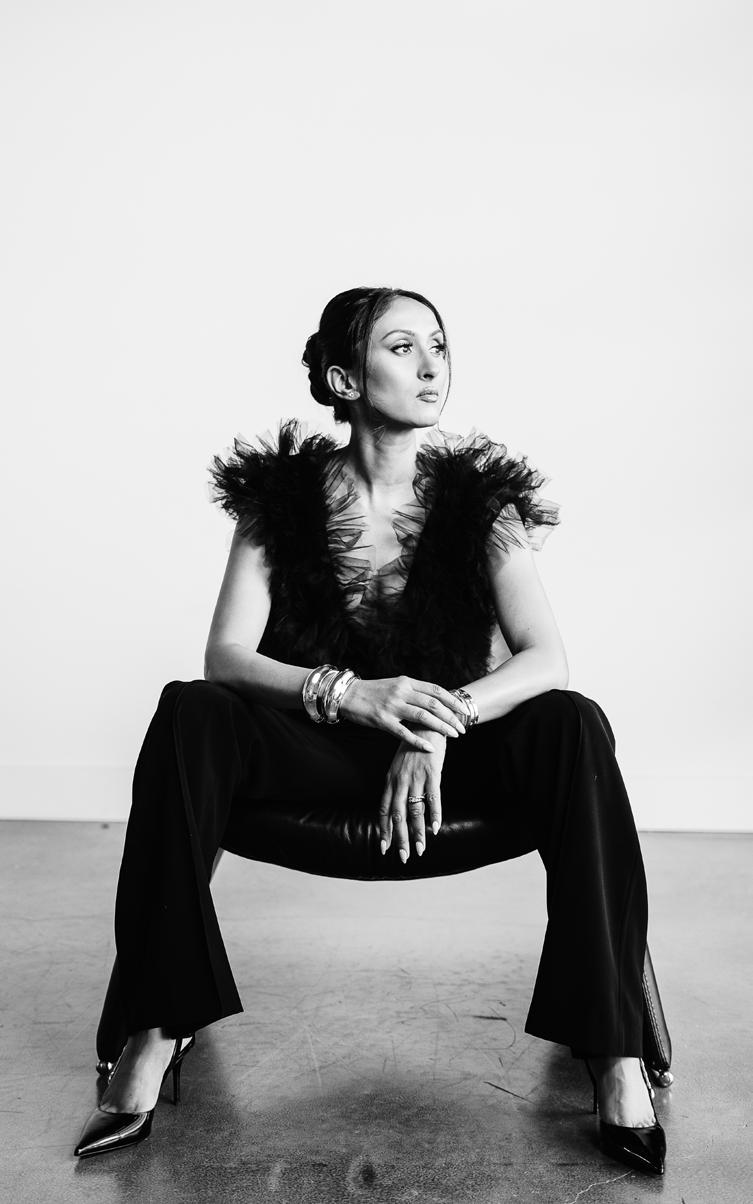
Interior designer Jaimie Anand navigates the balance between modern vision and neighborhood character as Austin's established areas evolve.
“How can I !nd something you’d only see on the runway and get a custom chair or sofa made with that print or silhouette?”
When Jaimie Anand "rst saw it, the 8,000-square-foot house had just been bought after years of neglect and was surrounded by traditional, southern-style homes. Her clients wanted something modern, but they didn’t want it to interfere with the rest of the neighborhood or look out of place.
Two years later, when her team had completed the renovation, she walked through the "nished home and found a chair where she could take it all in. “I just sat there and thought, ‘Oh my God, I cannot believe how this turned out,’” she said
That renovation is one of Anand’s favorites for the scope and scale of reinvention it achieved. The project touched every part of the home, from removing beams and designing custom 10-foot doors to reworking electrical plans and lighting. “That was, to me, a standout project because it was such a transformation,” she said. “People always think interior design is just decorating or picking furniture. No, we do everything from beginning to end: electrical, architectural details, lighting, the works.”
Anand has lived and worked in Austin for two decades, and in that time, she has seen the city’s aesthetic shi!. “When you think of Austin, it’s always been a very laid-back style, a lived-in style where people just want comfort and cozy home vibes,” she said. Builders once "lled neighborhoods with southern-inspired homes, but over the years, the skyline changed with high-rises and glass exteriors, and that shi! began to reshape expectations for what a home should feel like inside.
“Now, if you go into any of these high-rises in Austin, it’s ultra modern, very clean lines, and the interiors don’t take away from the Austin skyline,” she said.
Clients noticed her modern work and began asking for more of it. “The population in Austin has changed,” she said. “We have a lot of people moving here from California and all over the country. They’re used to seeing very modern, high luxury. So I "nd myself doing a lot of that now.”
As Austin grows, Anand sees room for the design industry to expand. “One thing we

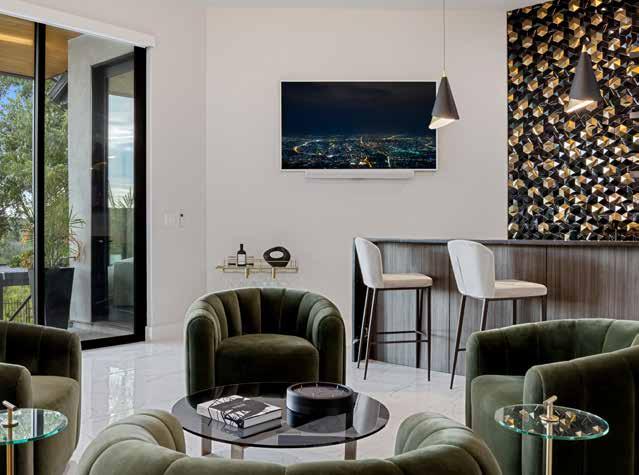
still lack is a design district,” she said. “If you go to any major city, they have one. I "nd myself sourcing materials outside of Austin, in Houston or Dallas, but we’re starting to get smaller businesses popping up o$ering higher-end options here in Austin.
She turns the challenge into an experience for clients. “They enjoy it when I say, ‘We’re going to drive up to Dallas today and spend a day or two sourcing everything,’” she said. For her, the absence of a design district in Austin is a chance for the city to shape what comes next. “It’s still a work in progress, but I see the industry here moving in the right direction,” she said
For Anand, design goes far beyond furniture selection. In the same 8,000-square-foot renovation, her team removed beams that disrupted %ow, extended porches, designed ceiling details and redid electrical plans to ensure lighting that felt like a home rather than an o ce. “Bedrooms don’t need six recessed cans. That feels so commercial,” she said. “We add indirect lighting to most of our projects, so it feels like a home.”
Standard architectural plans o!en follow code but don’t consider how a space will actually feel to live in. Anand’s team reworks those details. “There’s a base electrical plan that we go in and so!en up,” she said. “We
make sure it’s made for, and goes with, the design of the home.”
Lighting is o!en where her clients are most surprised. “They say, ‘Oh wow, you’ll help with that?’” she said. She loves this part of her work, shi!ing a space from something built to code to something beautiful and customized for life. “We go step by step, so!ening it up and making sure it all comes together.”
While Anand’s aesthetic leans modern, she always "nds ways to ground projects in Austin. That o!en comes through local art. “Austin has so many art galleries, and I’m not talking about high-end places,” she said. “It’s local art. Clients want to incorporate that into the "nal design.”
For one plastic surgeon’s o ce, she framed a photograph of the Austin skyline by a local photographer and added a sign made by a local artist from repurposed aluminum spelling out “Austin.” Anand pointed out, “You can tell it was local and that’s something everyone, even people who have been here forever, want to incorporate.”
She sees that blending of modern design and local creativity as essential. “I love bringing in local trades to commission pieces. It adds a personal touch,” she said.
Anand’s work eventually led her to create her own furniture line. The idea surfaced at a completion party for one of her projects. A client asked if she had ever wanted to design furniture. “I said, ‘That is literally always what I wanted to do—lighting and furniture,’” she recalled.
She already had sketches and notes. Soon she designed and launched a 12-piece collection, manufactured in India to honor the cra!smanship of her roots, that will be in showrooms at the end of October.
Her love of fashion shaped the line, giving it a distinct edge. “I’ve always had a love for high fashion, and I wanted the collection to be fashion inspired,” she said. At the same time, Anand looks to global in%uences. “Italy has a big in%uence on furniture, which I love because Italian furniture is my favorite to use,” she said. Even with that admiration, she found that many pieces on the market started to blur together. “At some point even Italian furniture starts to look similar. Homes can start to look like showrooms,” she said
She’s already designing lighting as well. Ten pieces are in development, with materials and glass colors selected. “I always knew one day I would do a lighting collection,” she said.
For Anand, the future of design is about combining in%uences. “Fashion and interior design inspire each other and I’m always working with that crossover in mind,” she said. Clients who are drawn to art and creativity o!en spark her imagination and inspire her to ask, “How can I "nd something you’d only see on the runway and get a custom chair or sofa made with that print or silhouette?”
As Austin continues to evolve, Anand believes the city is ready to embrace this kind of experimentation. “Austin is becoming its own version of Hollywood,” she said. “They’re shooting so many movies here, and the homes being built are ultra modern. I personally love it because it’s my design aesthetic.”
For Anand, the city’s trajectory matches her own: rooted in tradition but open to transformation, blending local art with international vision and always ready to surprise.
Compassionate and ercely protective, Jenny Remington helps ambitious women achieve their personal and professional dreams. The ICF-certi ed business and life coach started by helping women get back in the door a er a career break. Now she’s helping them rede ne what success looks like once they’re there and beyond.
"When I rst started coaching, my 'why' was helping women who had taken a career break— whether to raise children or for other life events—get back into meaningful careers," Remington said. "I had seen rsthand the struggles and self-doubt they faced trying to ' t back in' to a system that o en undervalues caregivers. They were working so hard but were o en overwhelmed and overlooked."
Drawing on 25 years in communications for global tech companies, nonpro ts and PR agencies, Remington understands the professional landscape her clients are navigating. That understanding has been sharpened by her own life experience. "The challenge that has shaped me the most is being a mother in today's world," Remington shared. "I coach ambitious women every day, helping them achieve exceptional outcomes with big projects and big budgets. Yet, no corporate challenge compares to the personal one of raising children in a world that feels increasingly disconnected, fast-paced and highstakes."
This dual perspective has shaped the why and practice of how she coaches. She still serves the same group of ambitious women, but her focus has shi ed, adapting to help them with the same complexities she has encountered. "I realized that getting back into a career wasn't enough if they were still being undervalued and under-appreciated," Remington explained. Now, her work centers on helping women advocate for themselves and prioritise their well-
being, teaching them it isn’t a weakness, but the foundation to build upon to reach their goals.
She knows many people think of coaching as a last resort, something you turn to when you're stuck. She sees it di erently. "Too o en, people wait until they're stuck or struggling before seeking support," Remington noted. "Hiring a coach isn't just about solving problems—it's about maximizing potential and staying aligned with your vision. The best time to invest in coaching is actually when things are going well."
Remington's a nity for helping others showed up long before she had a coaching certi cation. "People would tell me that they felt like they could tell me anything, that I really listened, that I remembered what was important and that I followed up," she said. She believed this was common, but now understands that helping people feel safe, understood and valued is her superpower.
That ability to create safety has become the cornerstone of her practice—because when women feel secure enough to be honest about their struggles and ambitious enough to voice their goals, transformation becomes possible. Through Jenny Remington Coaching, she's creating a launching pad where ambitious women can return to themselves, ready to rede ne success on their own terms.
t o f e ce
“Helping people feel safe, understood, and valued—that’s my superpower.”
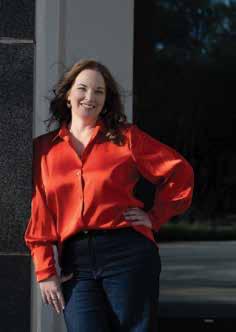
Doménica Niño brings heart, artistry and meaning to every petal and stem.
About
Doménica Niño is the artist and founder behind Bloom House
ATX, a floral design studio built on creativity and intention. With a background in public health and degrees from Emory University and Tu s University, Niño channels her love for connection through owers. Her arrangements blend artistic composition, emotion and natural beauty, turning every oral arrangement into a story. Through Bloom House ATX, Niño creates elevated, heartfelt oral designs for weddings, events and everyday moments, each cra ed to re ect life's beauty and depth.
"I'm happiest when I'm creating," Niño said. "Flowers have a beautiful way of keeping us grounded in the present moment, and working with them feels like meditation in motion." This past year, working in public health for the federal government has been incredibly challenging for Niño. Many talented colleagues lost their jobs, and the creative spark that once fueled her work in health communication began to fade. "I realized I need creativity in everything I do," she explained. "That clarity, combined with Austin's community of fearless entrepreneurs, gave me the push I needed to nally start Bloom House ATX and build something of my own."
Her approach to oral design draws from years of cra ing narratives in public health, with messages meant to
resonate, inform and inspire. Now she applies that same intentionality to her arrangements. Each one is layered with meaning, composed to evoke emotion and tell a story through color, texture and form. Her work re ects both technical skill and a deep appreciation for the eeting beauty of the natural world.
"I hope my owers inspire a sense of wonder," she said. "I want people to pause and truly see their beauty—to notice how each bloom tells its own story, yet together they create a symphony of color, texture and emotion." She views her work as a reminder of how eeting and precious beauty can be. "Like life, owers don't last forever, but their impact lingers when we take the time to appreciate and cherish them."
There's a vulnerability in letting her creations leave her hands. "As a passionate oral artist, I pour my heart into every arrangement—I want each one to feel like a work of art," Niño shared. "When I deliver them, I o en feel a sense of attachment, wanting to protect and care for the blooms so they last as long as possible." It reminds her of when she painted and could only part with pieces she knew would be cherished. "I'm learning to trust that my clients will feel that same love and care in every stem."
“Like life, owers don’t last forever—but their impact lingers when we take the time to appreciate and cherish them.”

“I hope my work shows that business and creativity can go hand-in-hand with inclusivity.”

When Kelsey Harrison started her career in wedding photography, she loved capturing the moments that mattered most. But a progressive neurological condition forced her to rethink how she could stay in the eld she loved. The answer? Build something new.
"I needed a way to stay in the events industry while building a sustainable business that empowered others to do the hands-on creative work," Harrison said. She founded Oh Happy Day Booth and Pop & Drop, two Austin-based event companies specializing in luxury photo booths and high-impact décor. The companies allowed her to combine creativity, innovation and inclusivity while creating meaningful opportunities for a team of talented people. As a disabled business leader, she's proving that professionals with physical disabilities can lead successful, creative companies. Her approach blends operational expertise with bold vision, challenging perceptions about what disabled professionals can achieve in the highly-tactical events industry.
Her work hasn't gone unnoticed. Harrison was recognized as part of the rst class of "Ones to Watch" by The Knot, standing alongside some of the most talented event professionals in the industry. "[It] was surreal," Harrison said. "It validated the hard work my team and I put into creating memorable experiences,
and it reminded me that innovation and passion in this industry are noticed and celebrated."
Harrison is known for her bold, vibrant approach and hands-on leadership. She delivers unforgettable experiences while empowering her team to shine, creating space for talented creatives to do what they do best. When her teams show up at events, they transform spaces with beautiful installations and high-quality photo booths. Every project re ects her commitment to innovation and her belief that the events industry can be a place where everyone belongs.
The legacy she's working toward goes beyond business success. "I hope my work shows that business and creativity can go hand-in-hand with inclusivity," Harrison said. "I want to leave a legacy of proving that professionals with disabilities can lead thriving, innovative companies and create opportunities for others along the way." She wants the photo booths, installations and events her companies create to bring joy and make celebrations memorable. She aims to inspire others in the industry to approach their work with creativity, integrity and heart.
Through Oh Happy Day Booth and Pop & Drop, Harrison is redefining what leadership looks like and proving that building with intention can only strengthen a business approach.
A longtime resident and real estate advisor watches Austin transform dramatically, while keeping its spirit intact.

Lisa Moore's path back to Austin wasn't straightforward. She "rst moved here in 2015 when her oldest son started at UT, drawn by the Lake Travis school district for her younger two boys. The family settled in Bee Cave, and once her children le! home, Moore moved downtown and embraced city life as an empty nester.
A few years ago, during a divorce, she relocated to the family condo in Florida, thinking she might stay permanently. She gave it a year and a half. "I quickly realized it wasn't for me," Moore said. "I missed Austin too much—the casual, laid-back vibe, the creativity and innovation, the energy of a college town, and of course the incredible food, music, and outdoor lifestyle. By late 2024, I was so homesick for Austin that I knew I had to come back."
Now back as a Luxury Real Estate Advisor with The Agency, Moore brings a unique perspective shaped by both distance and return.
Coming back to Austin's real estate landscape proved both exciting and surreal. "Austin has always been a dynamic city, but the growth in the last few years has been incredible," Moore said. "The skyline looks di$erent, neighborhoods have evolved, and there's a new level of energy around technology and innovation here. At the same time, Austin has managed to keep its soul—the music, the food, the creative culture, and that laid-back vibe that makes people fall in love with it."
Her time away and return gave her an edge. "For me as a Realtor, coming back feels like the perfect timing," she said. "I know the 'old Austin,' but I also understand the new energy shaping the city."
What sets Austin apart is its economic diversi"cation. "I think newcomers are helping Austin evolve beyond just being a tech hub," Moore said. "With "lm studios being built, space exploration companies setting up shop, and entrepreneurs relocating here, the city is becoming more diverse economically. That strengthens the real estate market because it's not just one industry driving demand—it's a combination of tech, creative, cultural, and business leaders who all see Austin as a place to put down roots."
The city's diversity and acceptance stand out to her, particularly how innovation and relaxation coexist. "Even with all the innovation and technology happening here, people still know how to slow down and enjoy life," Moore said.
When Moore "rst moved here in 2015, Austin felt like a small college town with a creative edge, "a little more under the radar," she said.
Today, tech companies, startups, entrepreneurs and creatives from around the globe have brought new energy and opportunity.
"There's also a stronger sense of collaboration now," Moore said. "It's common to see investors, musicians, designers and entrepreneurs working side by side—the kind of cross-pollination that sparks new ideas and keeps Austin innovative yet approachable."
Despite the growth, authenticity remains. "You can still go two-stepping at Sagebrush to a live band most nights of the week, grab BBQ at Terry Black's in Barton Springs, gather with friends at a food truck park, or hear live music on a patio and feel that same laidback, welcoming energy," Moore said. "The scale has shi!ed, but the soul of Austin is very much alive."
Moore can't discuss being an Austinite without mentioning UT football. Game days bring energy, tradition, and citywide unity. She believes living in a college town keeps people young. "Being surrounded by the energy and excitement of UT keeps Austin feeling vibrant," she said. "That mix—where innovation and growth live right alongside tradition and community—is part of what makes Austin so unique."
Your home is more than where you live. It’s a re ection of your lifestyle, a signi cant asset within your broader portfolio and a key part of the generational wealth you may pass down, making mortgage decisions a critical part of your long-term wealth strategy.
When thoughtfully structured, the right nancing approach can help you achieve the lifestyle you envision, while preserving your investment exibility and supporting long-term wealth growth. Whether you’re shopping for a primary residence, vacation retreat or investment property, it’s wise to keep a few strategic concepts in mind early in the process to ensure your decisions align with your broader goals.
A home purchase should t seamlessly into your broader wealth plan. Beyond being a residence, it’s a real estate investment that should align with the rest of your portfolio’s growth projections, risk tolerance, liquidity and estate plans. At the same time, it carries signi cant longterm costs including property taxes, insurance, maintenance, and even sta ng that should be factored into your cash ow. An experienced wealth advisor or private banker can help you adjust and optimize your nancial plan with your new home as an integral component.
For many high-net-worth buyers, the decision isn’t whether they can buy in cash, but whether they should, since strategic nancing can help preserve capital for other opportunities. The real focus should be on structuring a mortgage to maximize exibility, minimize opportunity cost and align with your wealth goals. While the conversation goes well beyond monthly payments, don’t underestimate the power of even a slightly lower interest rate. When it comes to large-scale nancing, a modest adjustment can translate into meaningful long-term savings that could be reinvested to further grow your portfolio.
For luxury homebuyers, a private banking relationship o ers exibility and personalization that standard retail channels can’t match. Working alongside your wealth advisor, CPA and real estate/mortgage team, a private banker can help you evaluate whether nancing is the right move, maintain liquidity and optimize tax e ciency. They can also help you navigate the o en-complex qualifying process for a jumbo or super-jumbo mortgage with more exible underwriting,
tailored terms and alternate quali cation approaches that re ect the full strength of your portfolio.
When approached strategically, home nancing decisions can become a powerful lever in long-term wealth planning. For a wellrounded, personalized approach to the homebuying experience, reach out to Alina Tudor at 512.473.4529 or Alina.Tudor@frostbank.com. ◆

